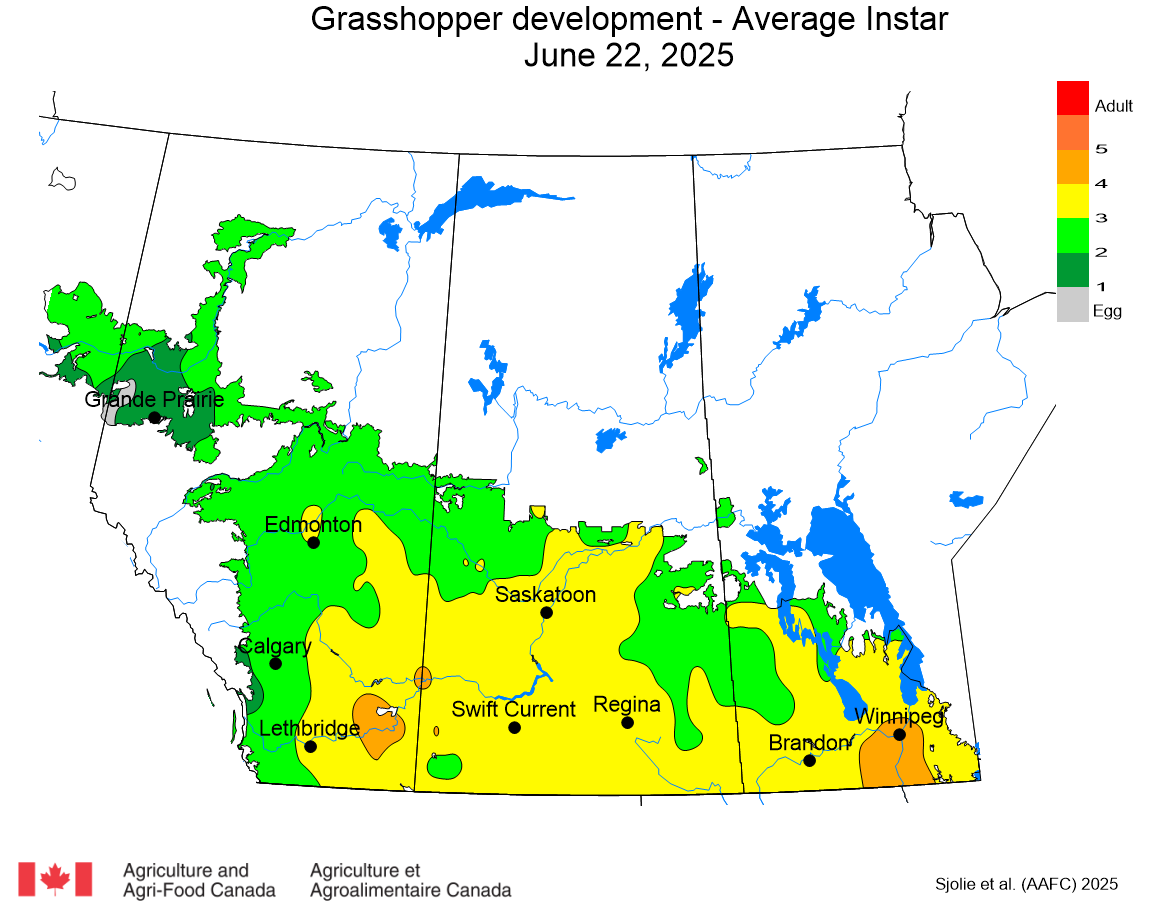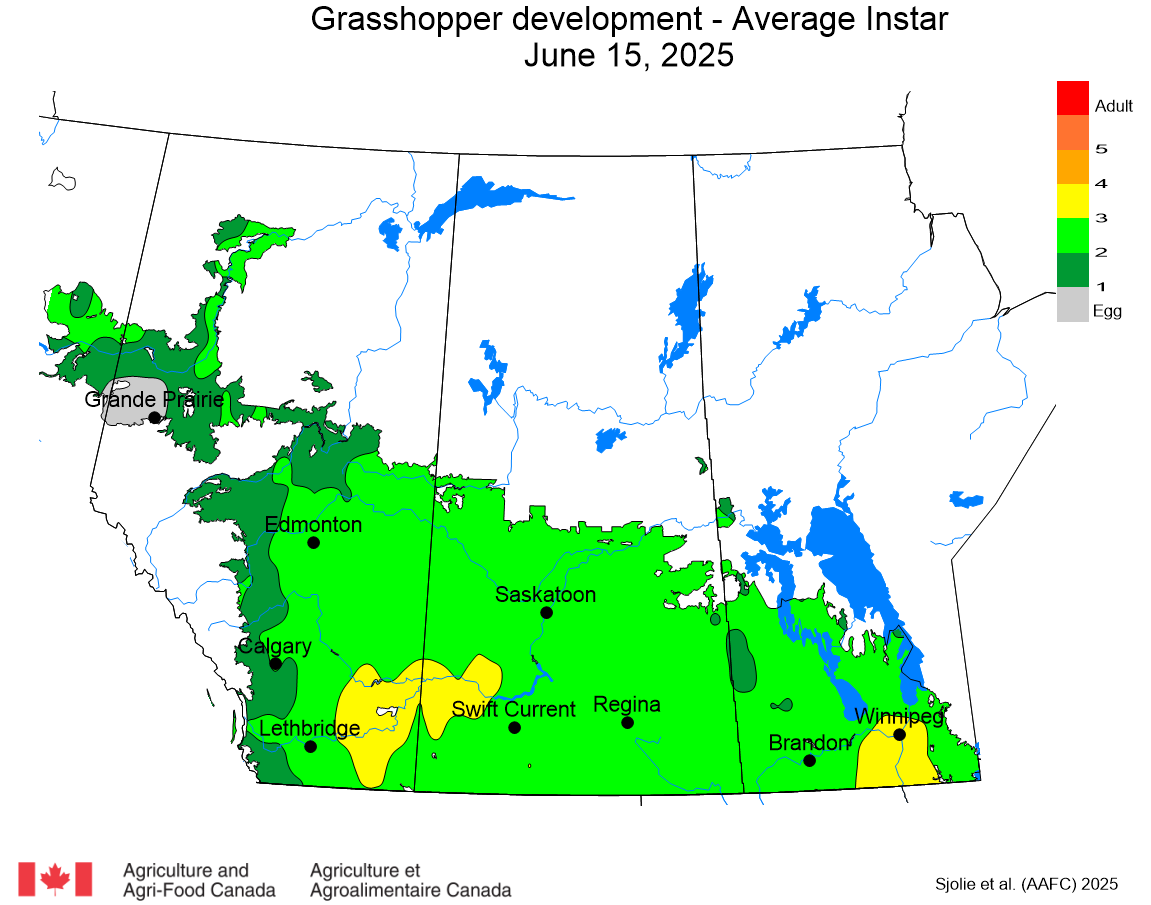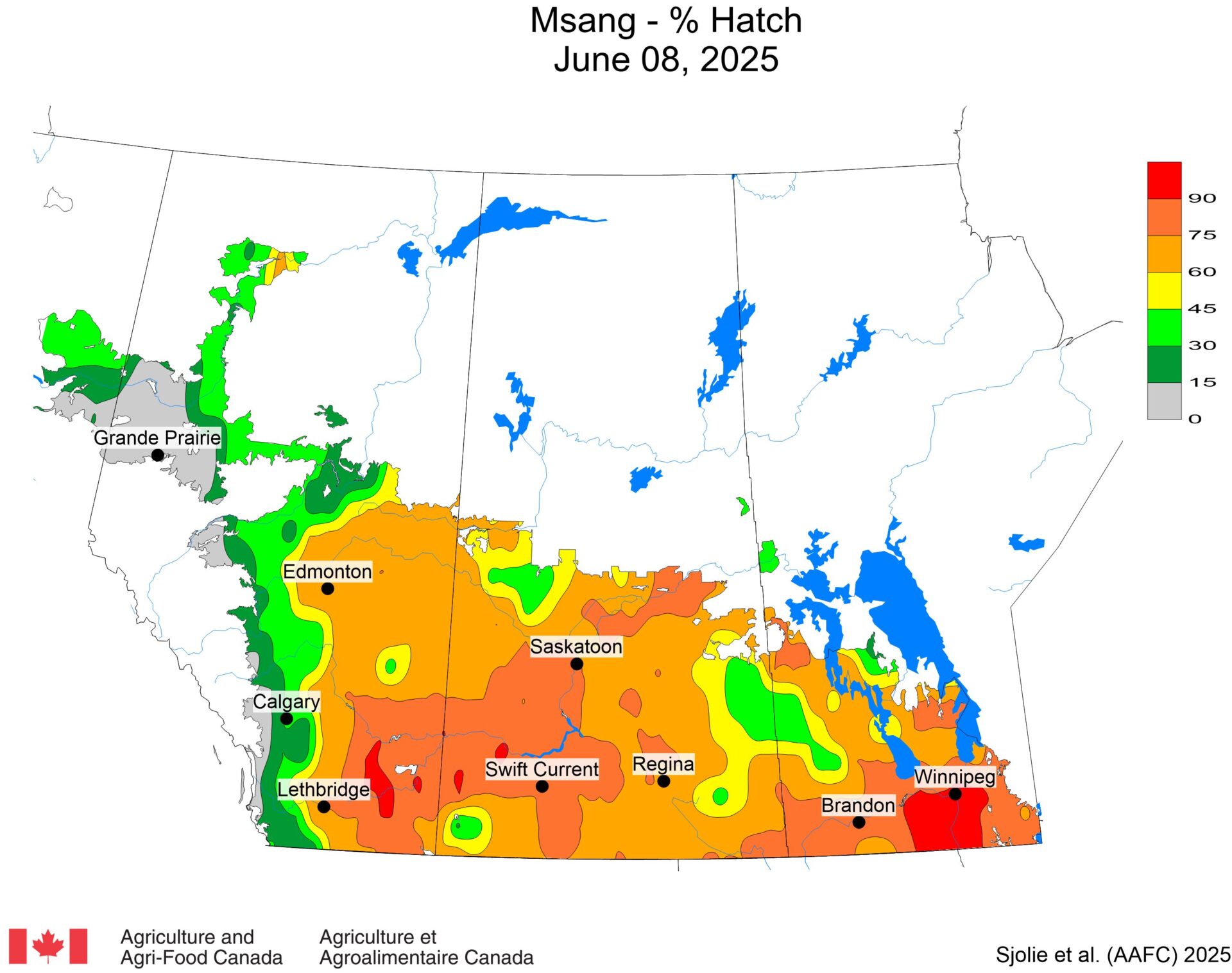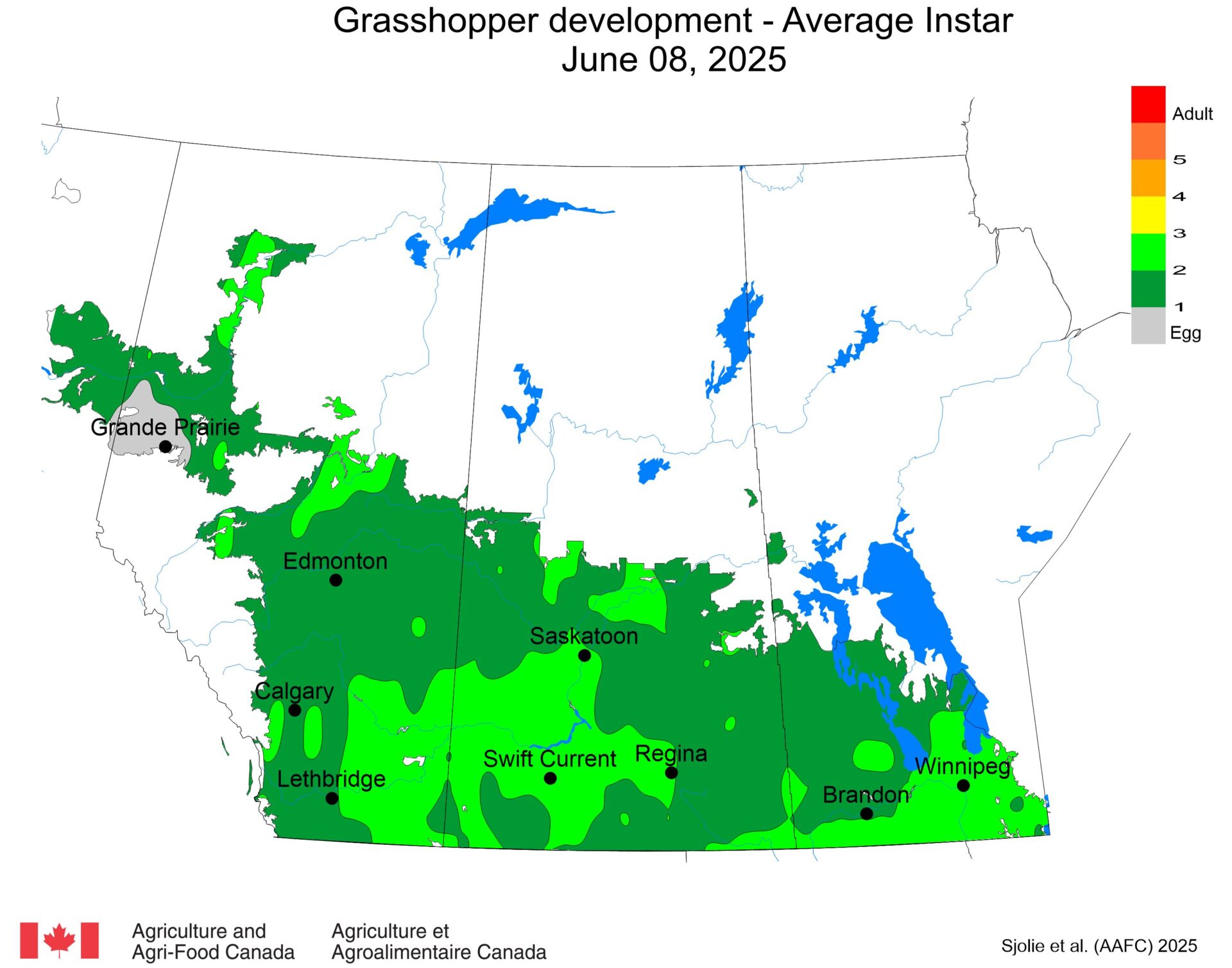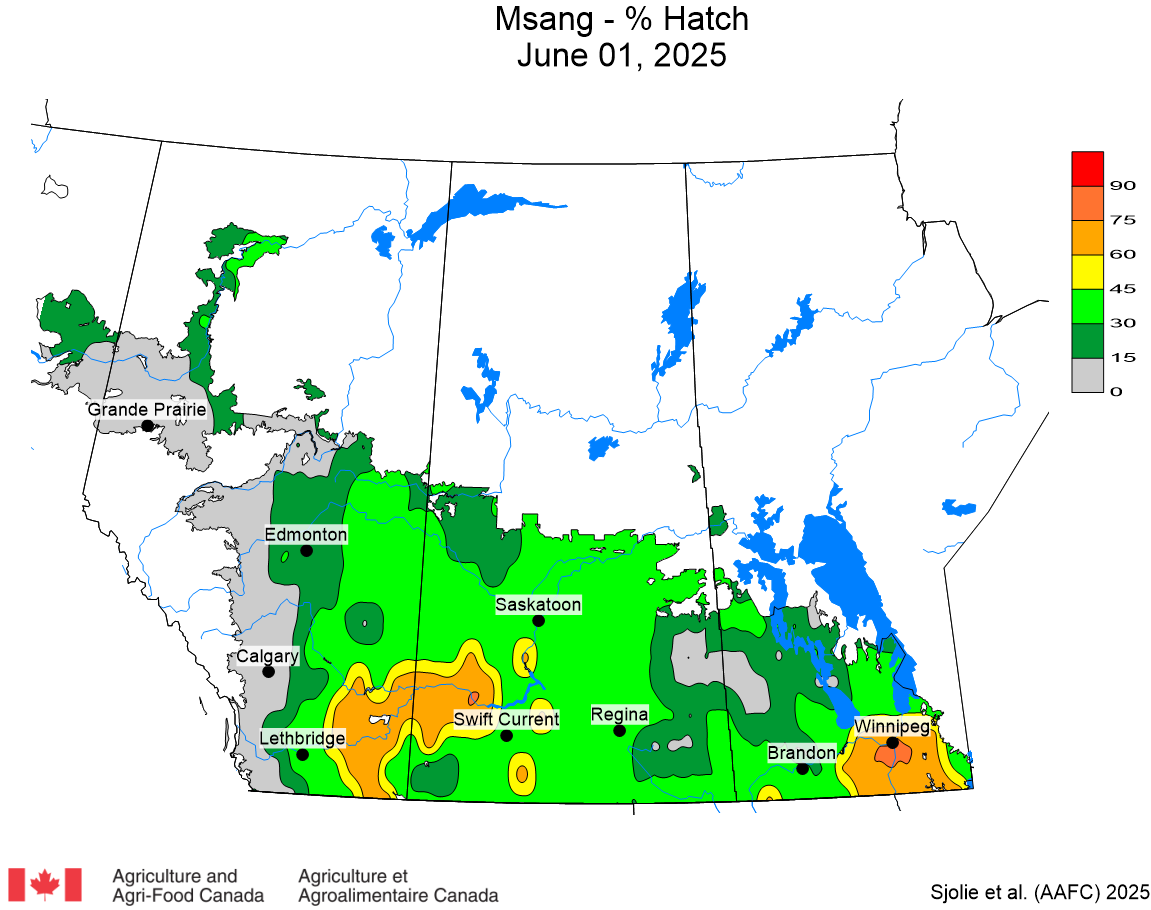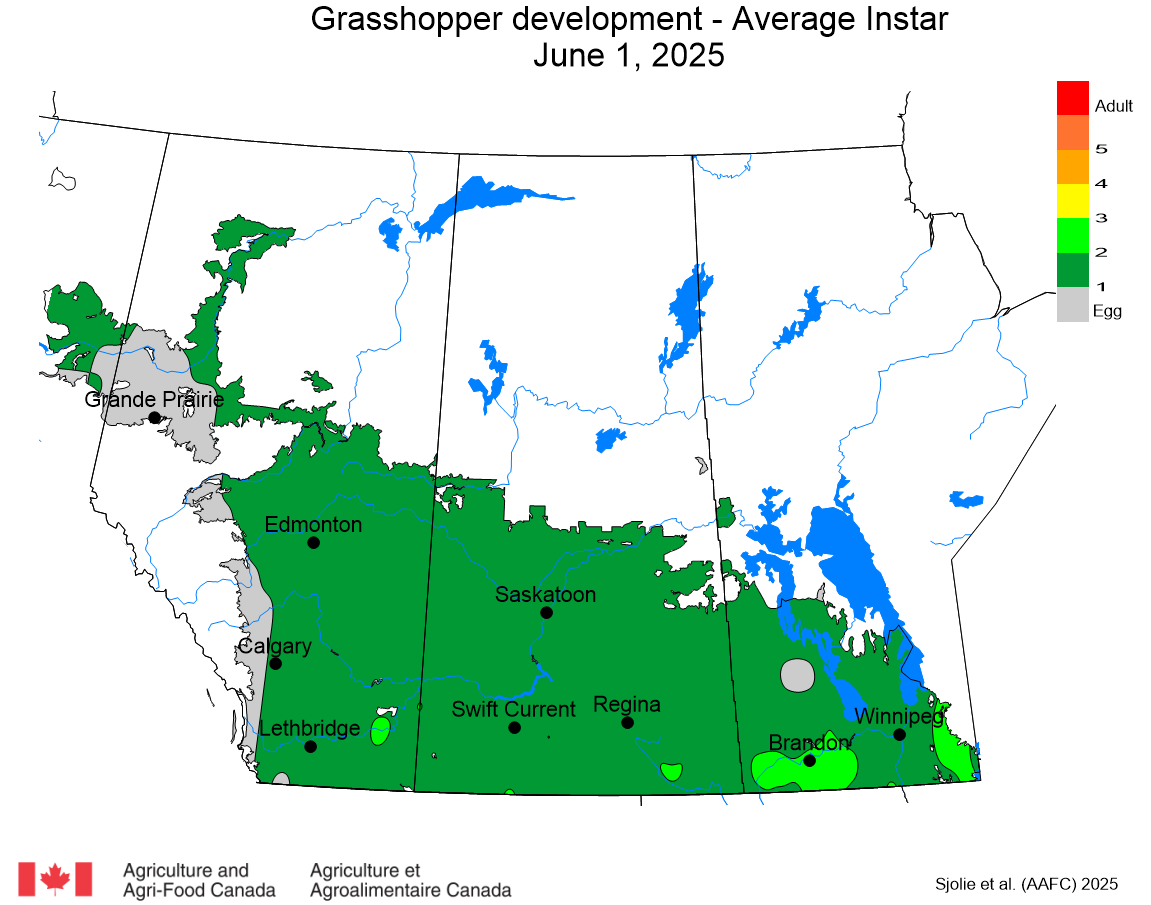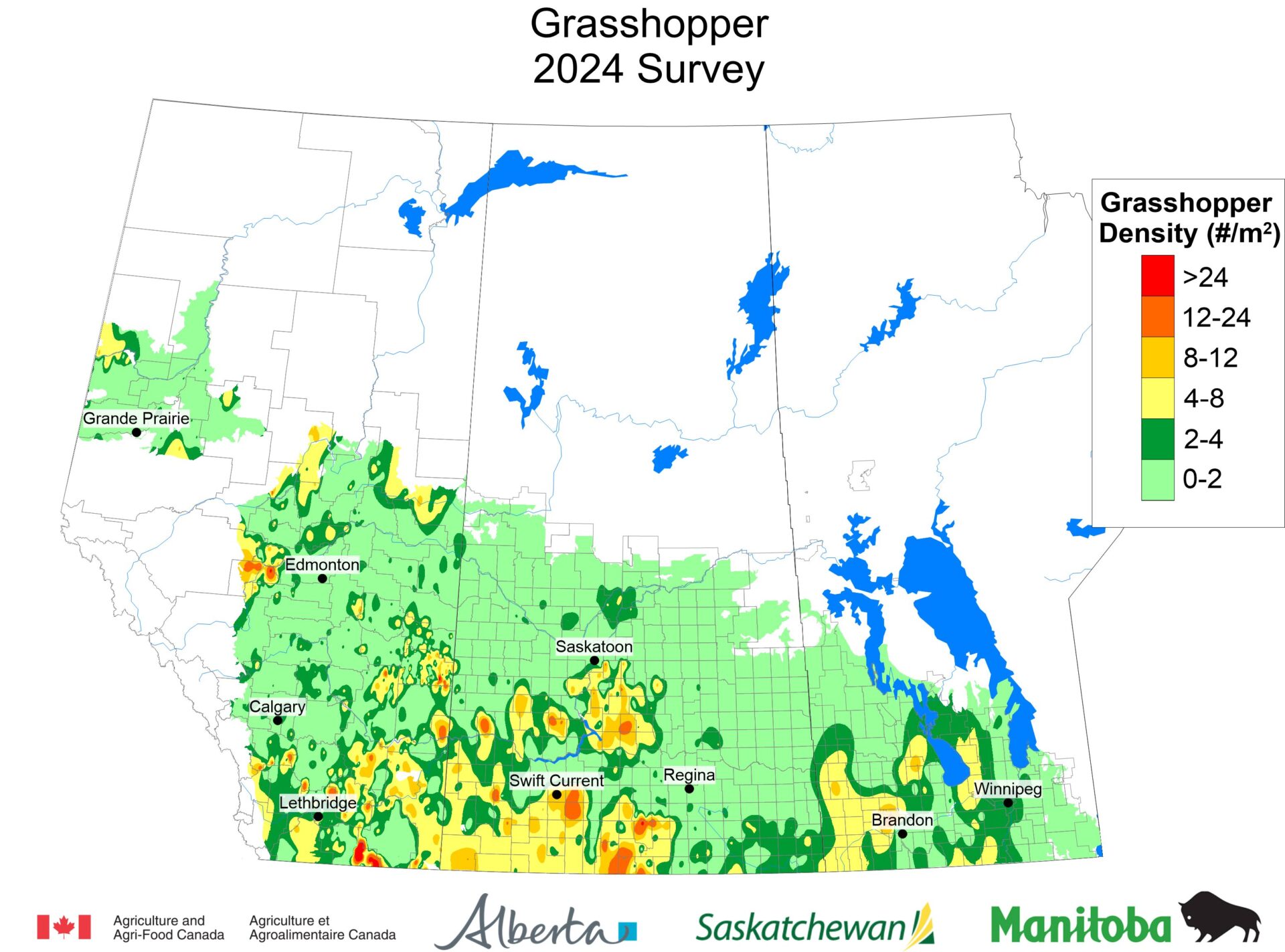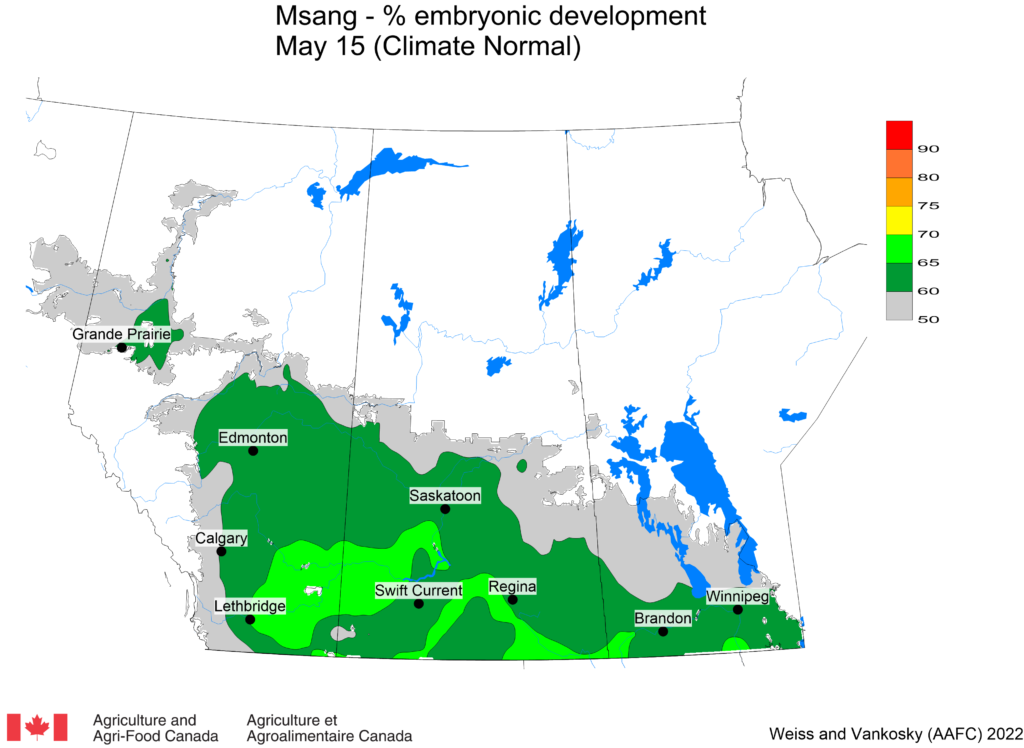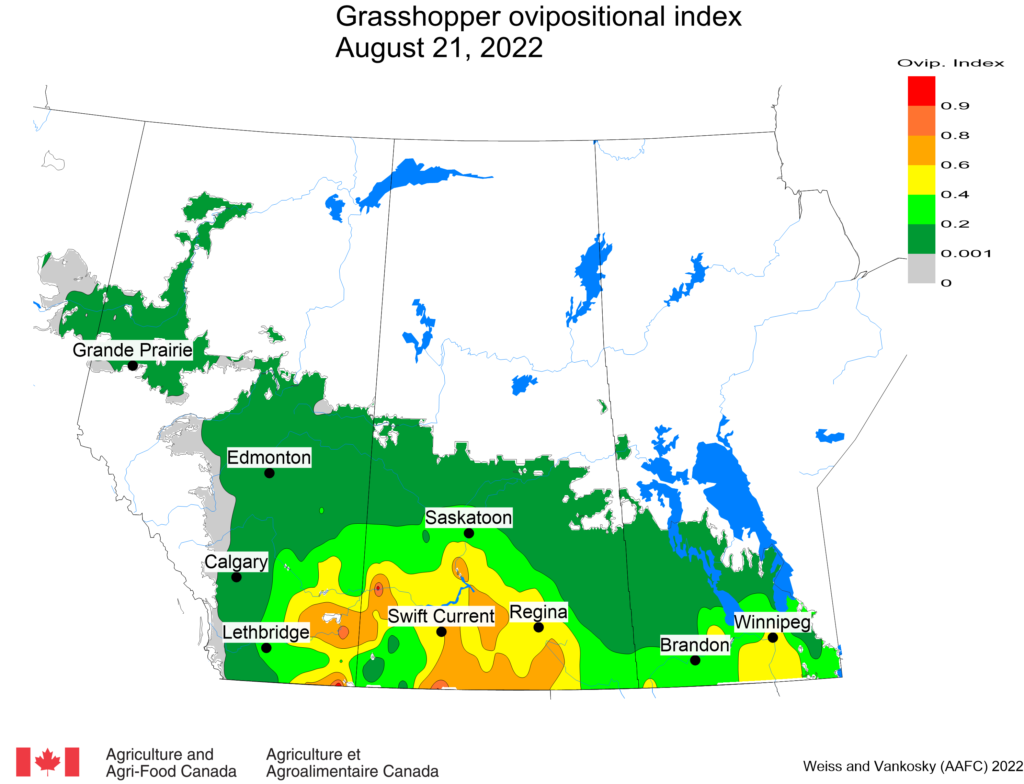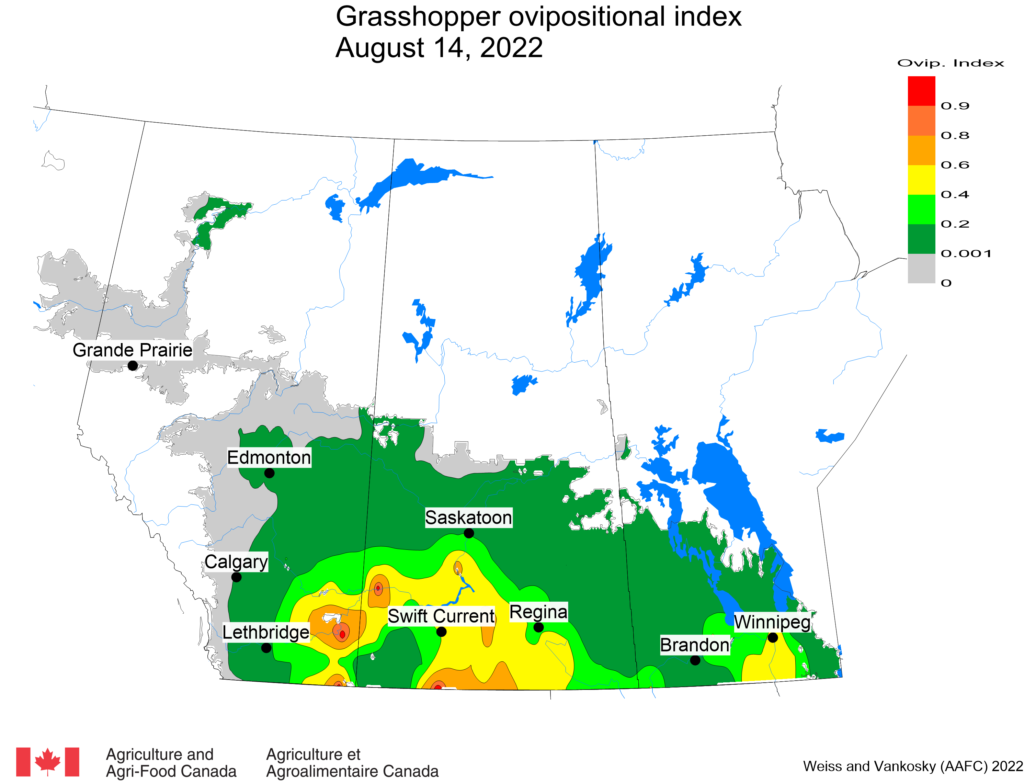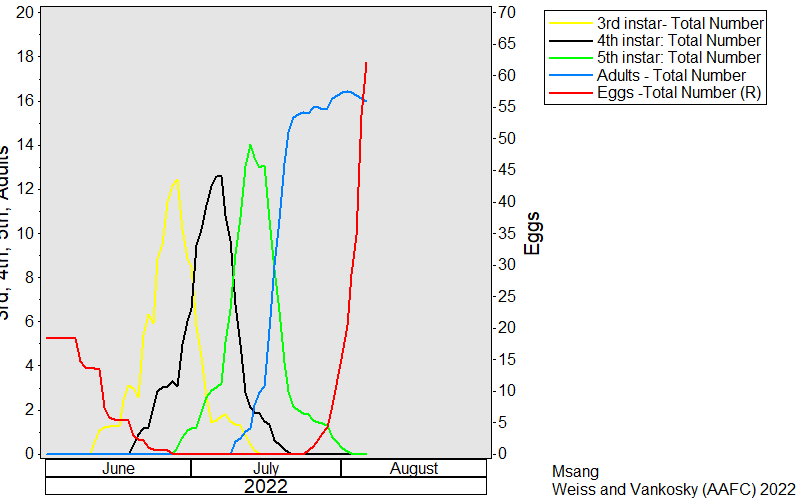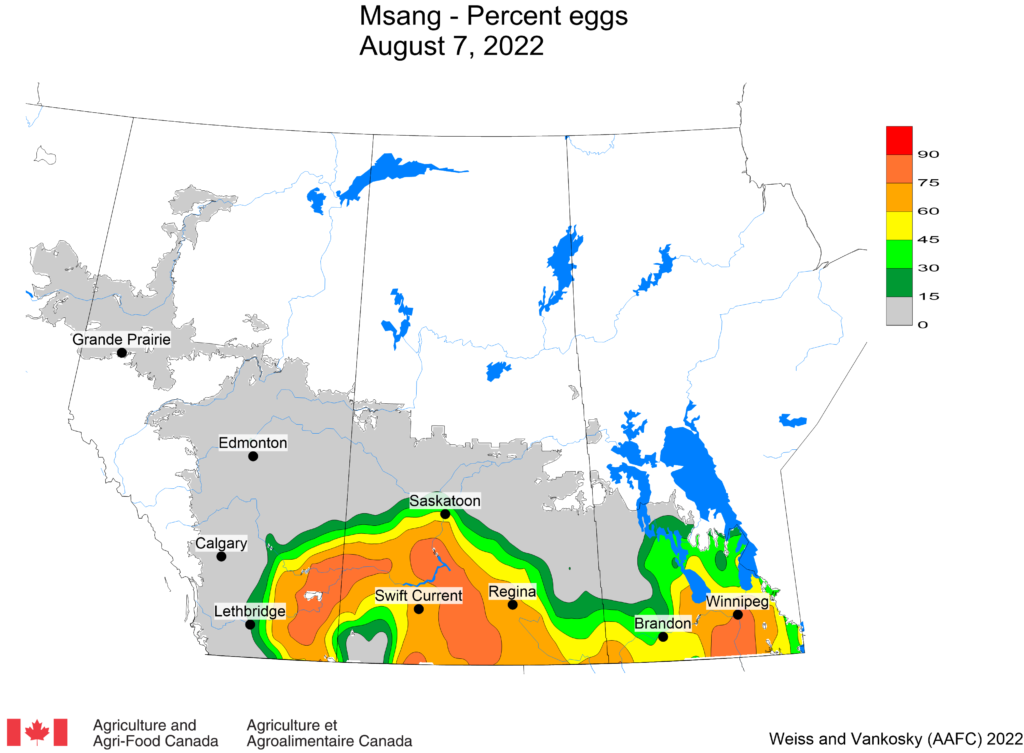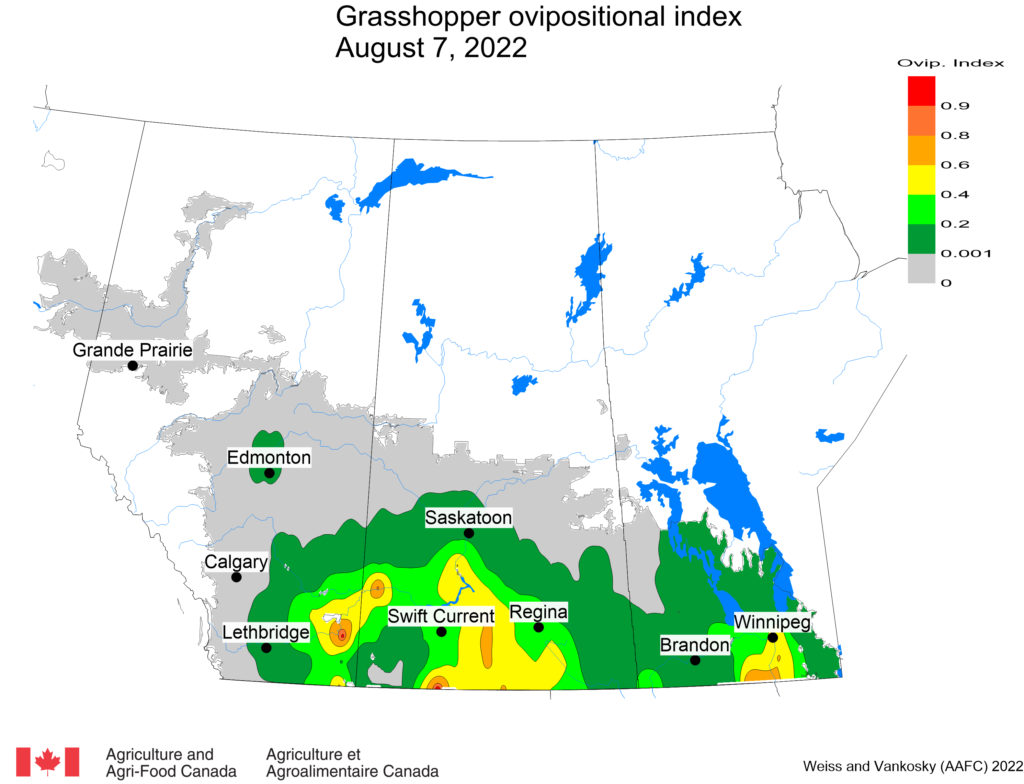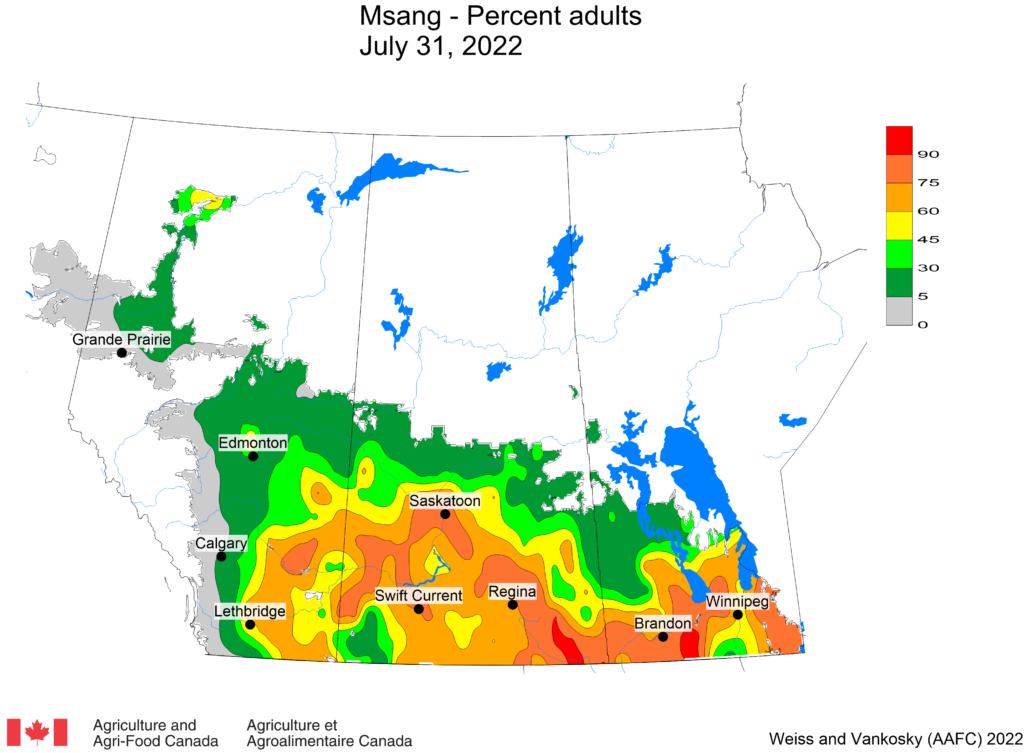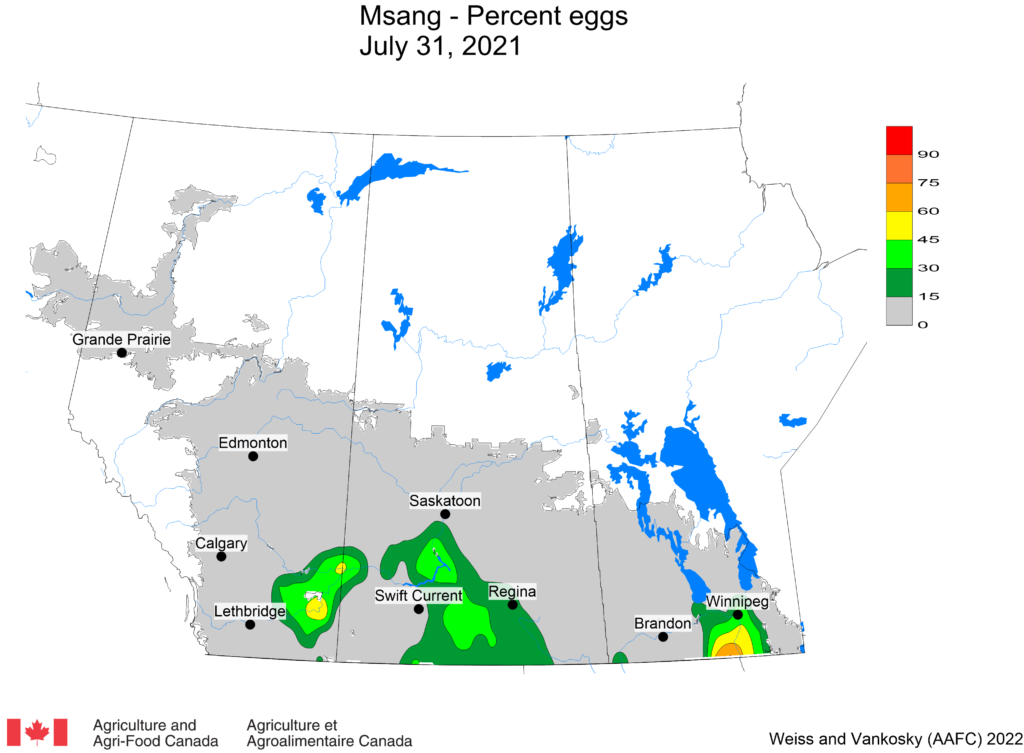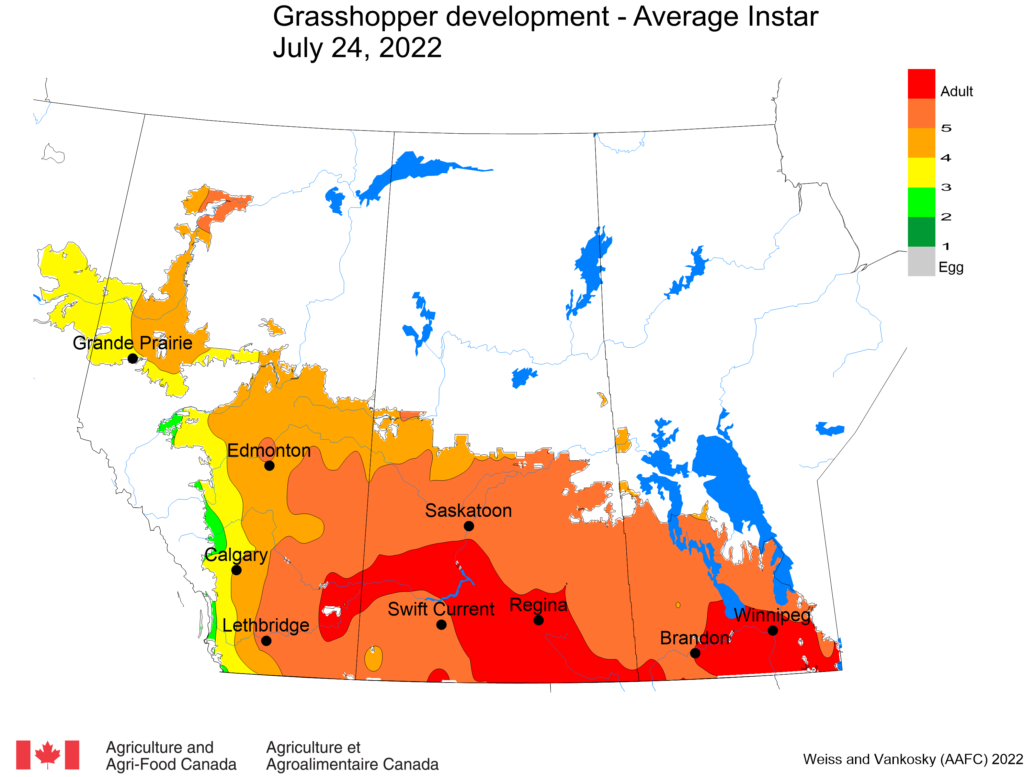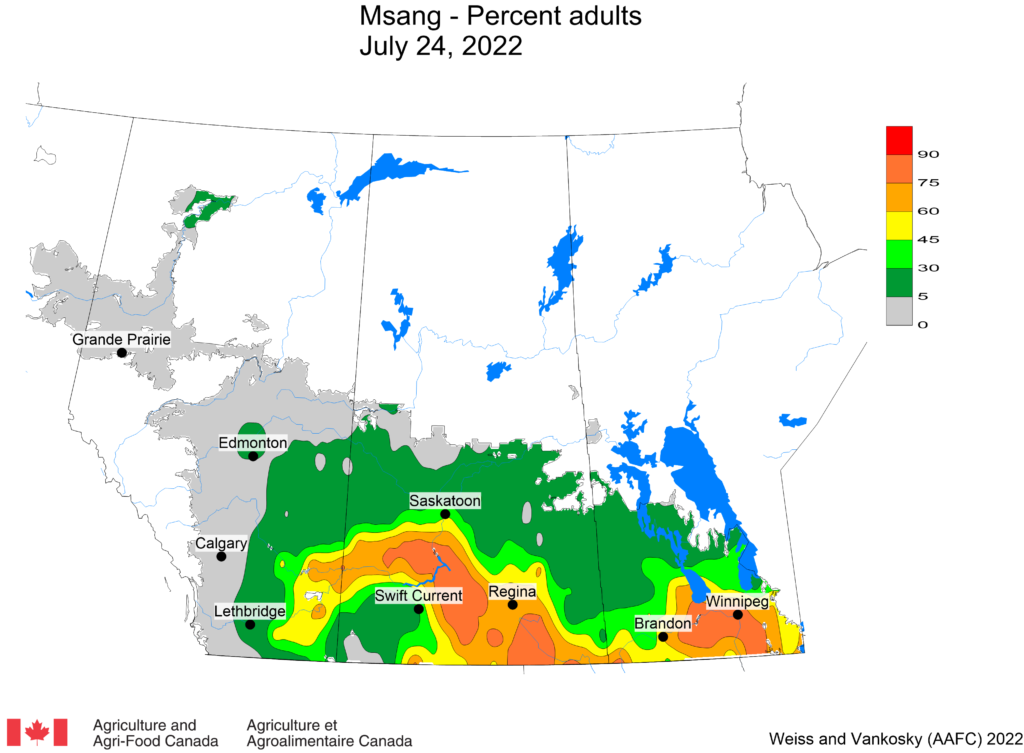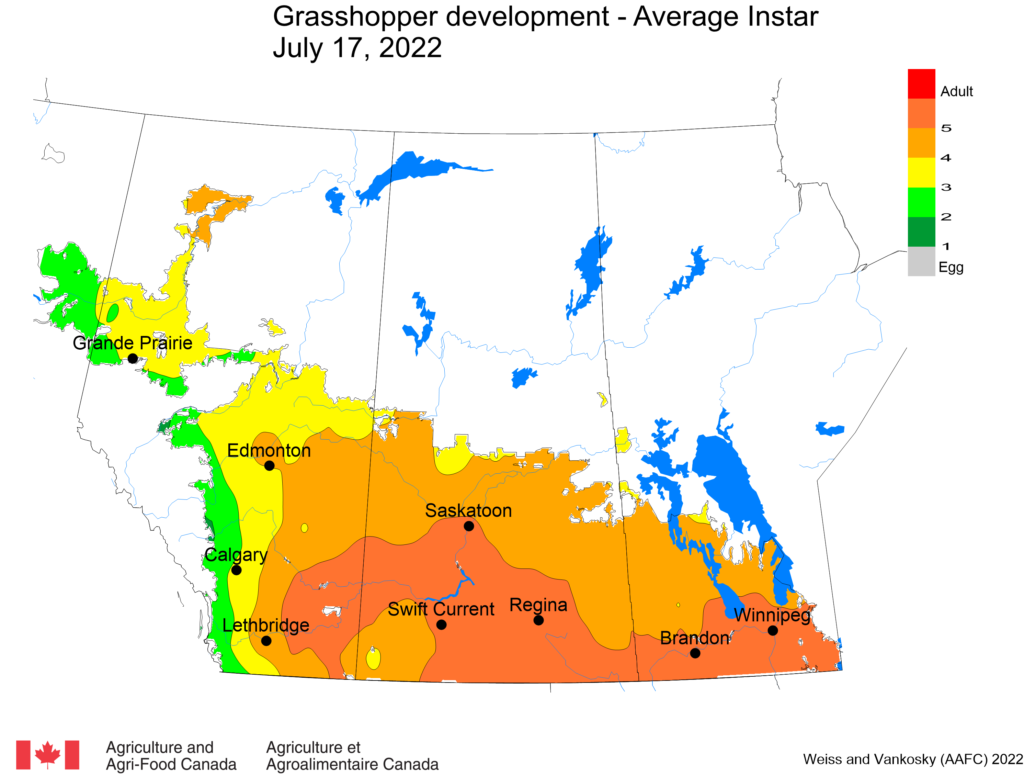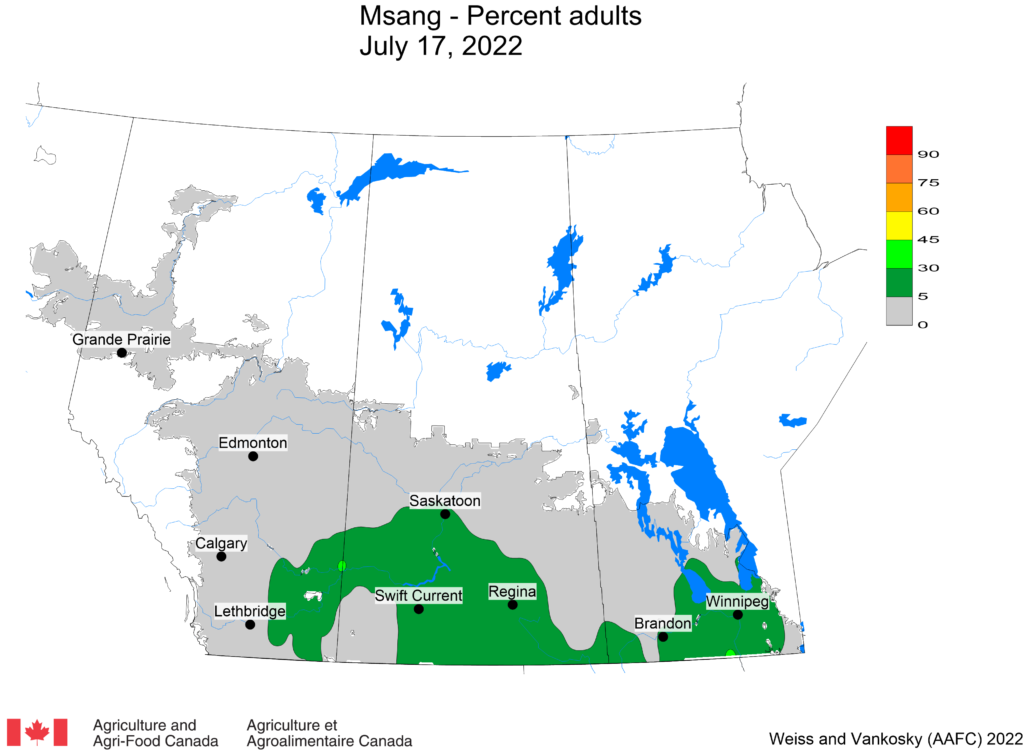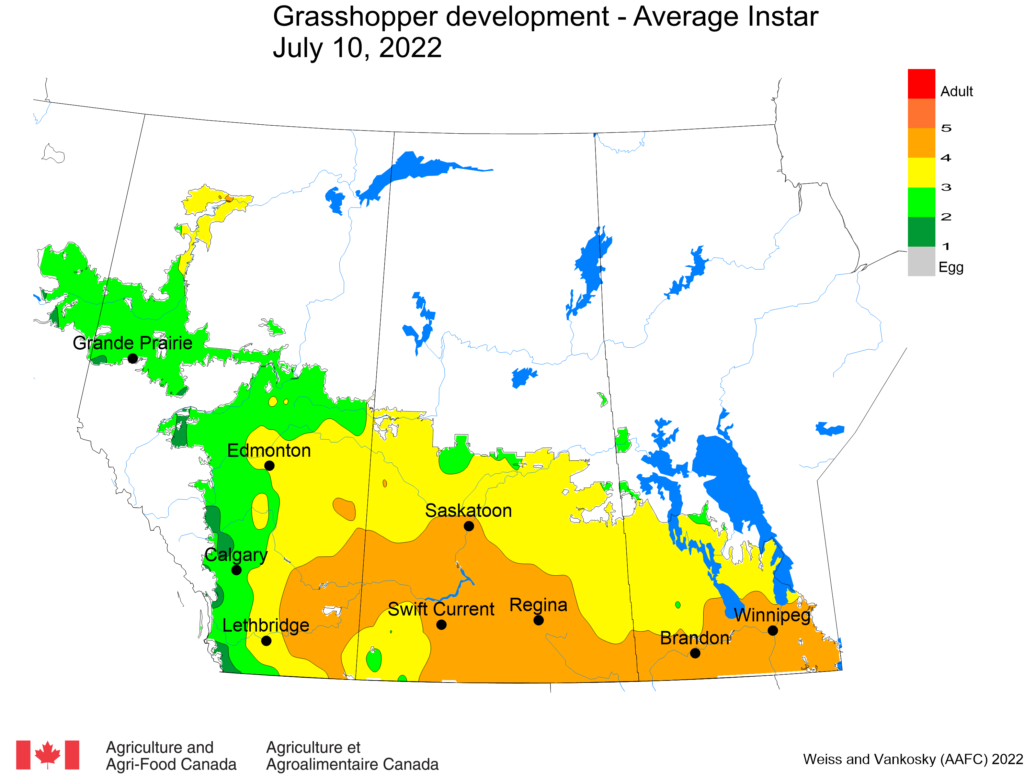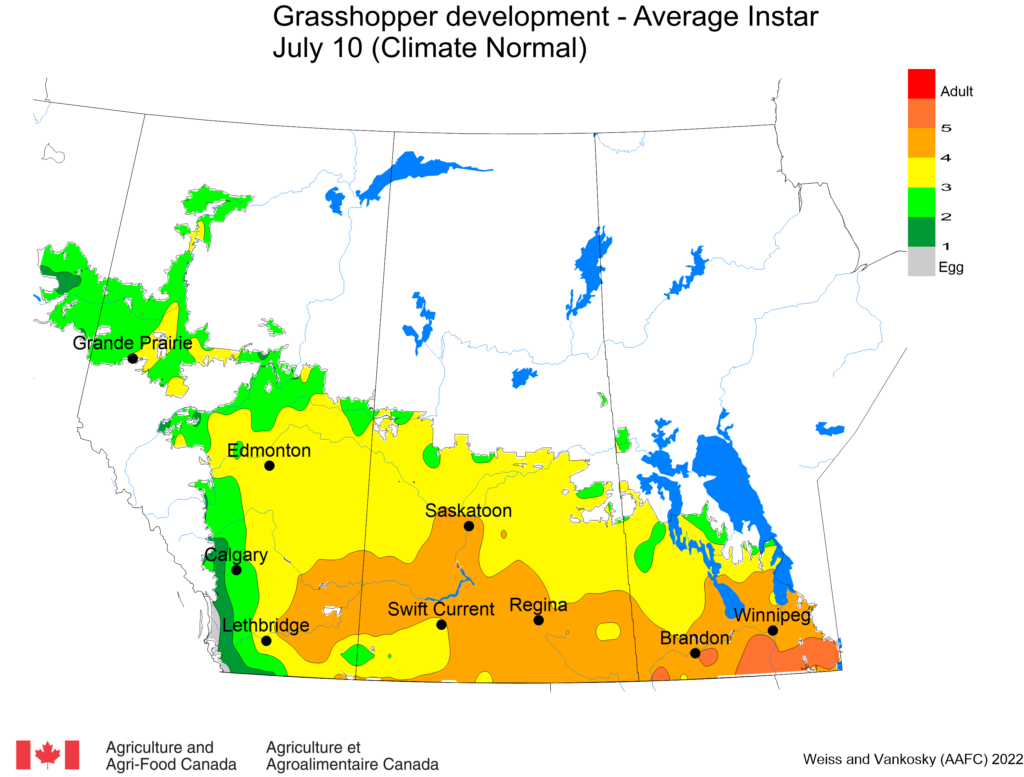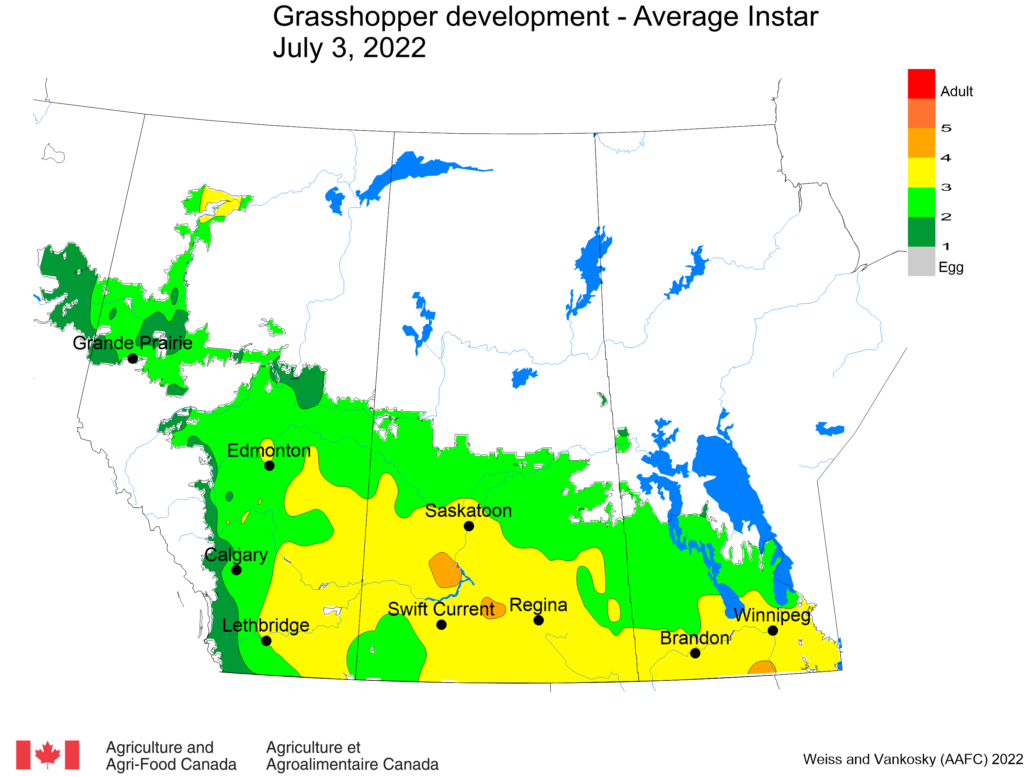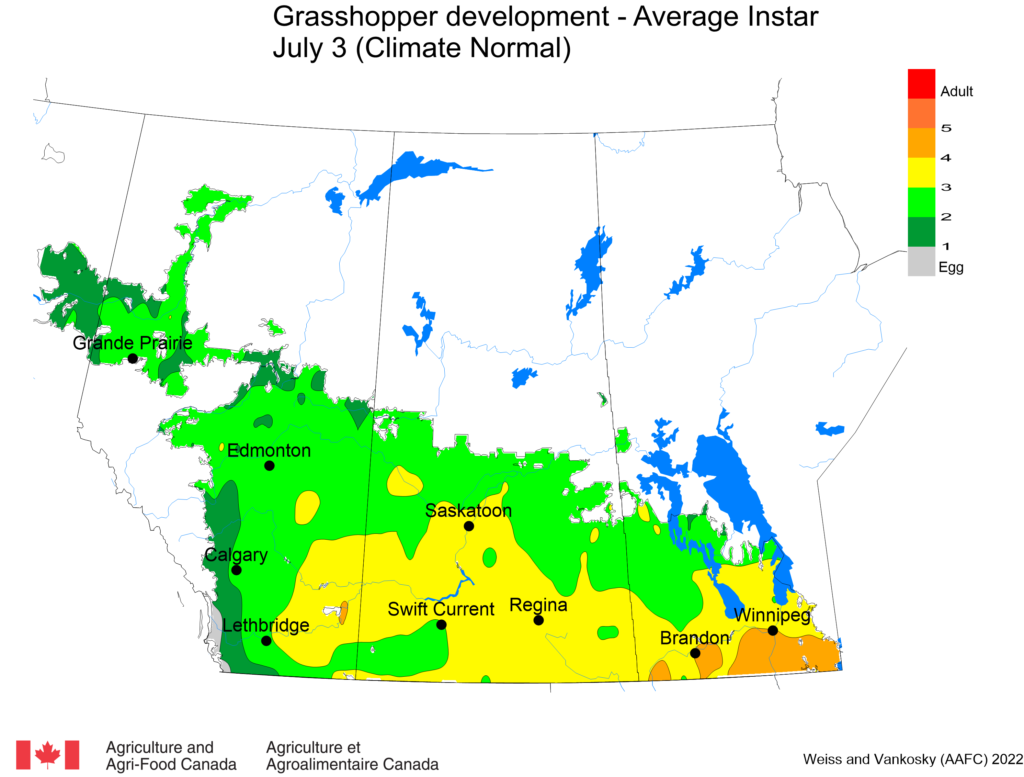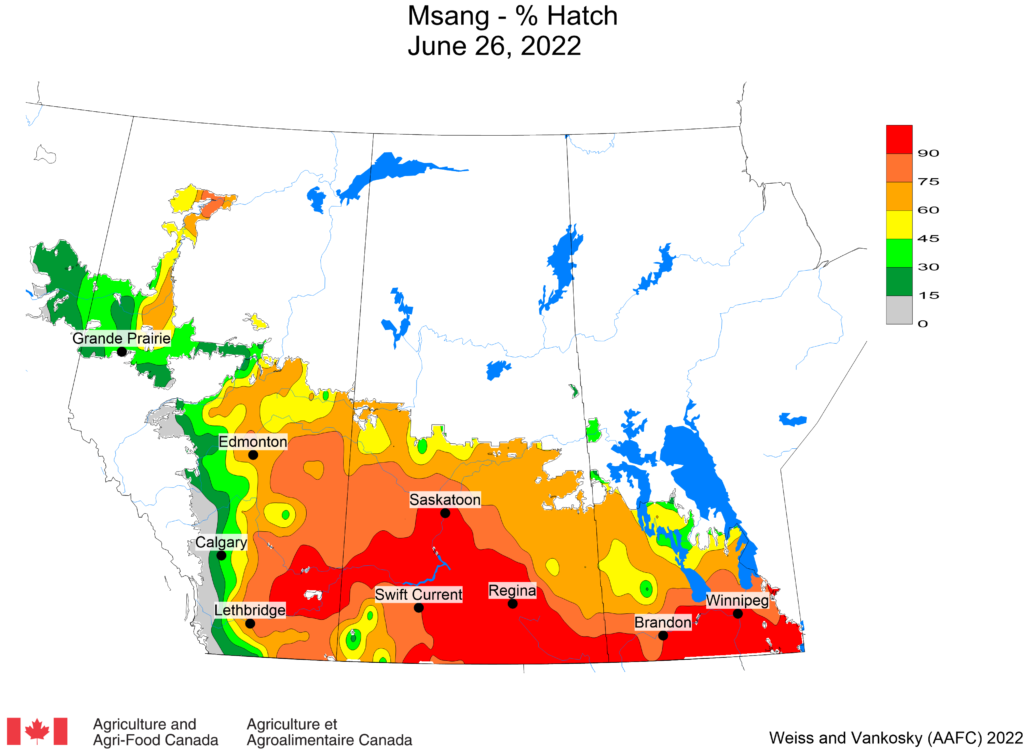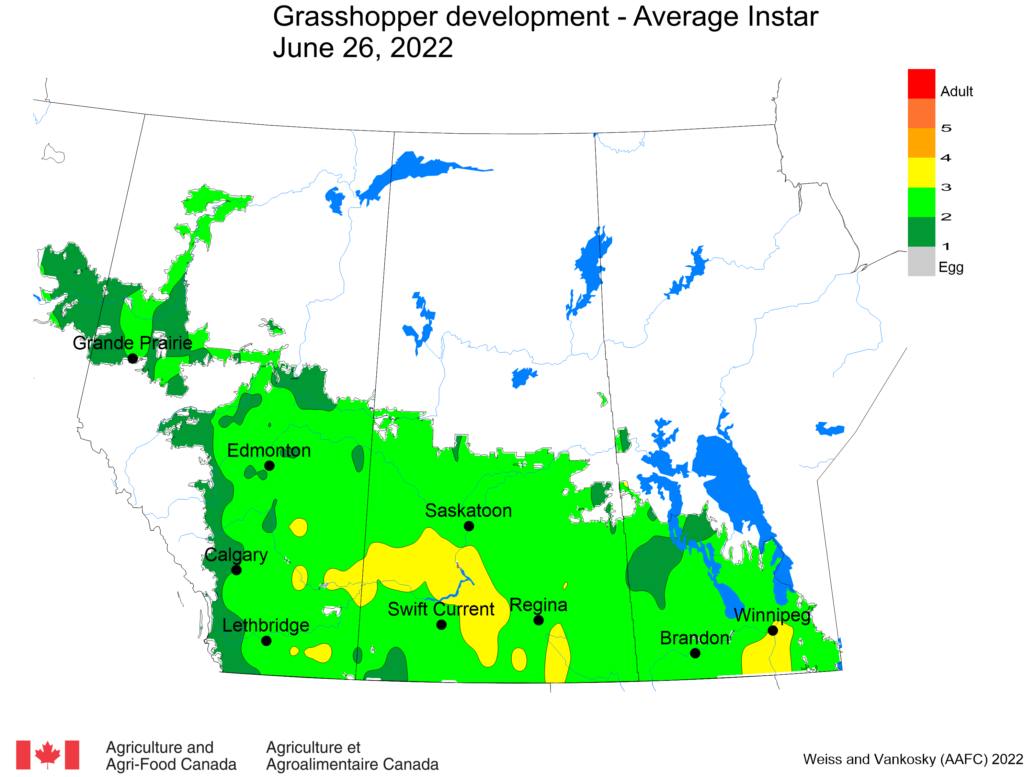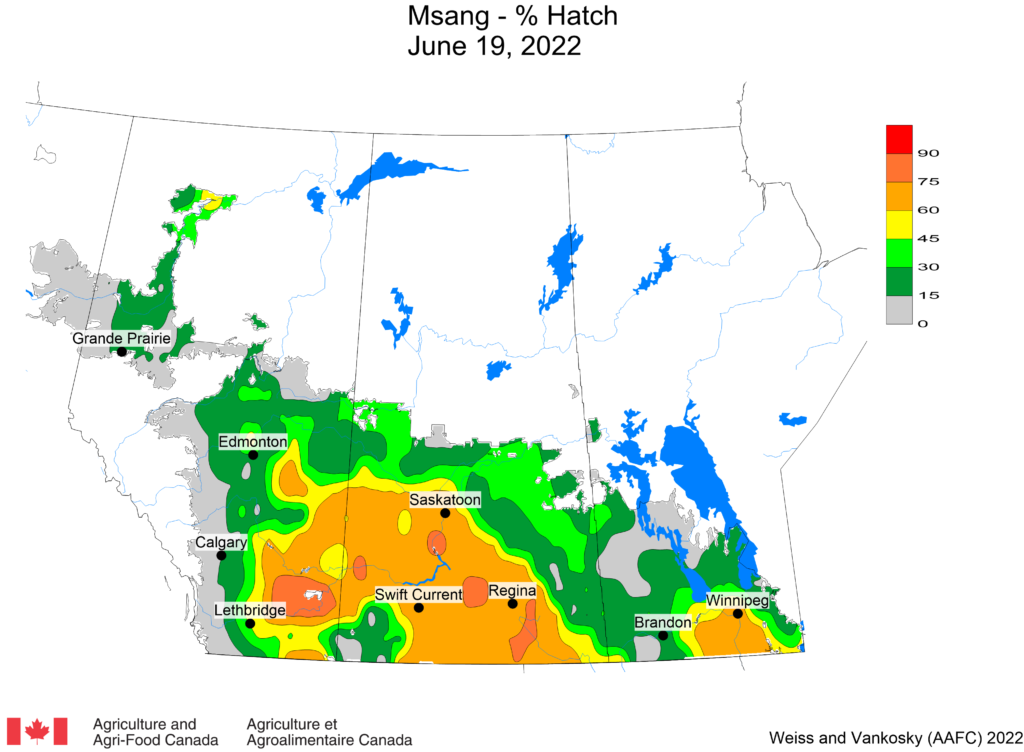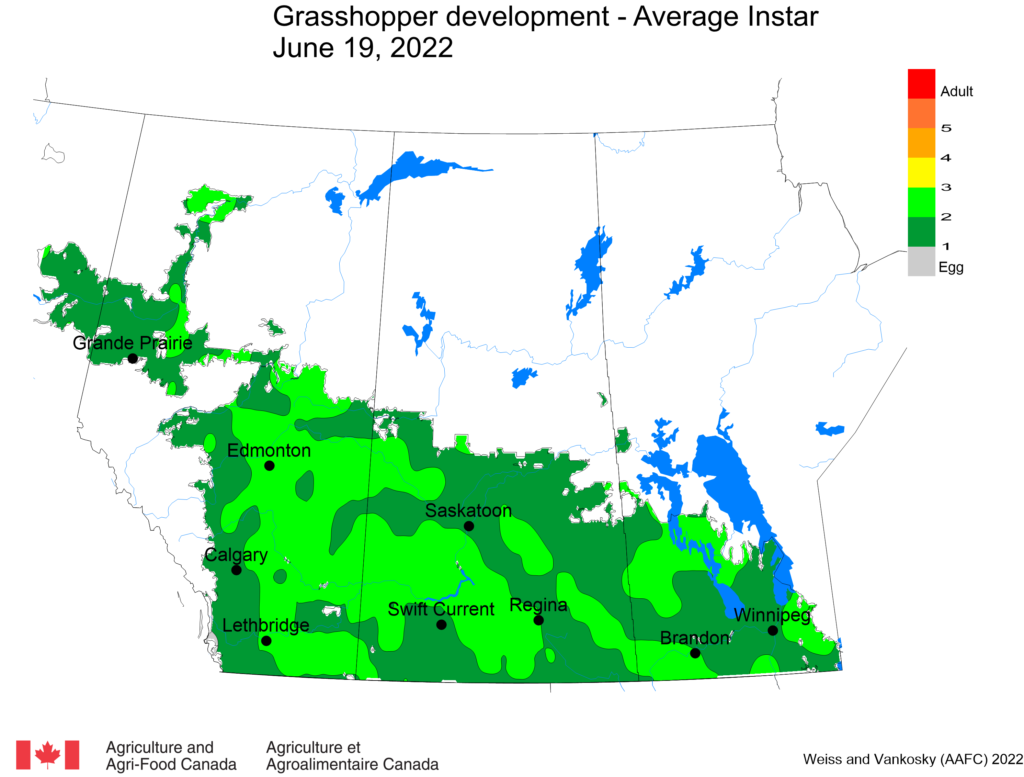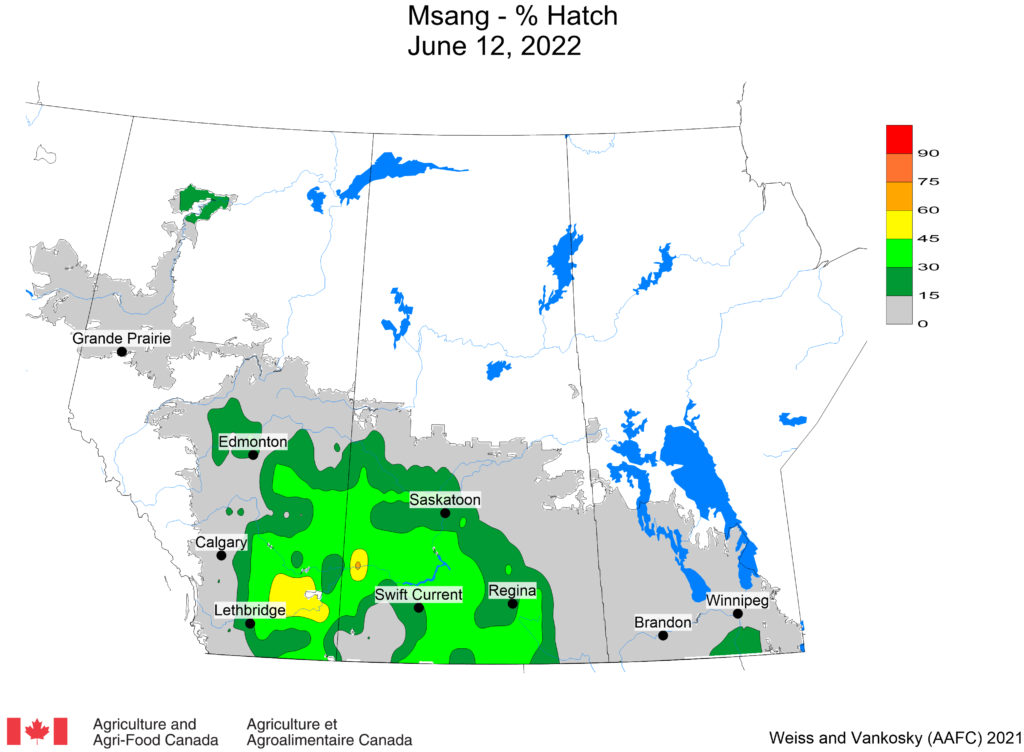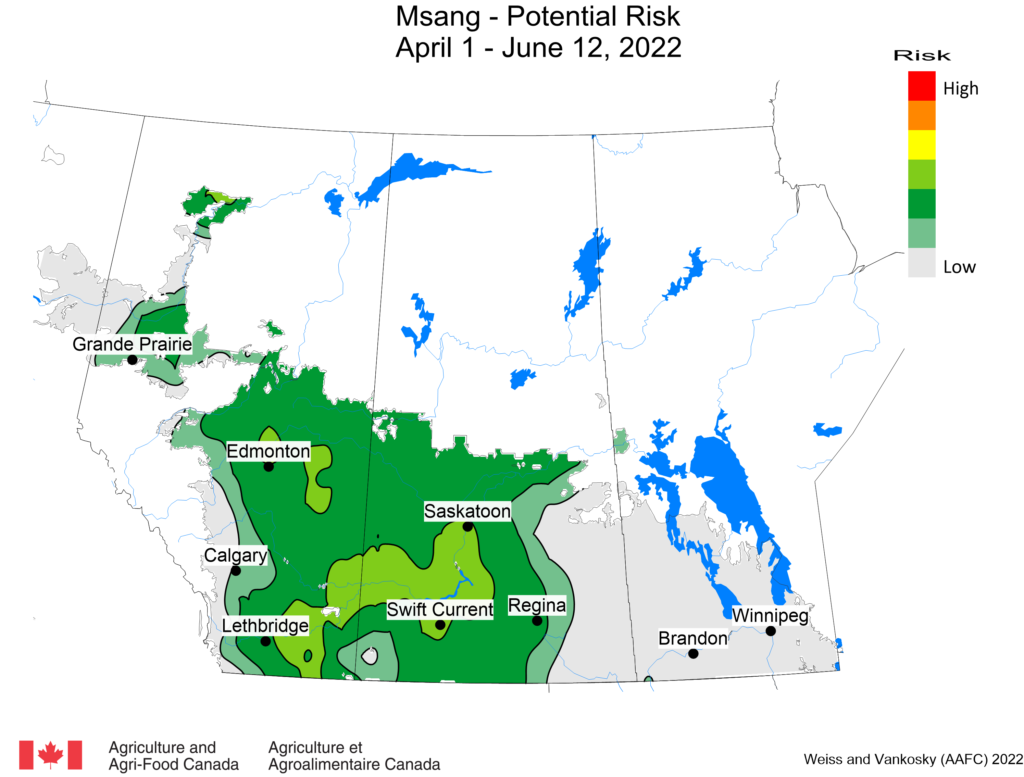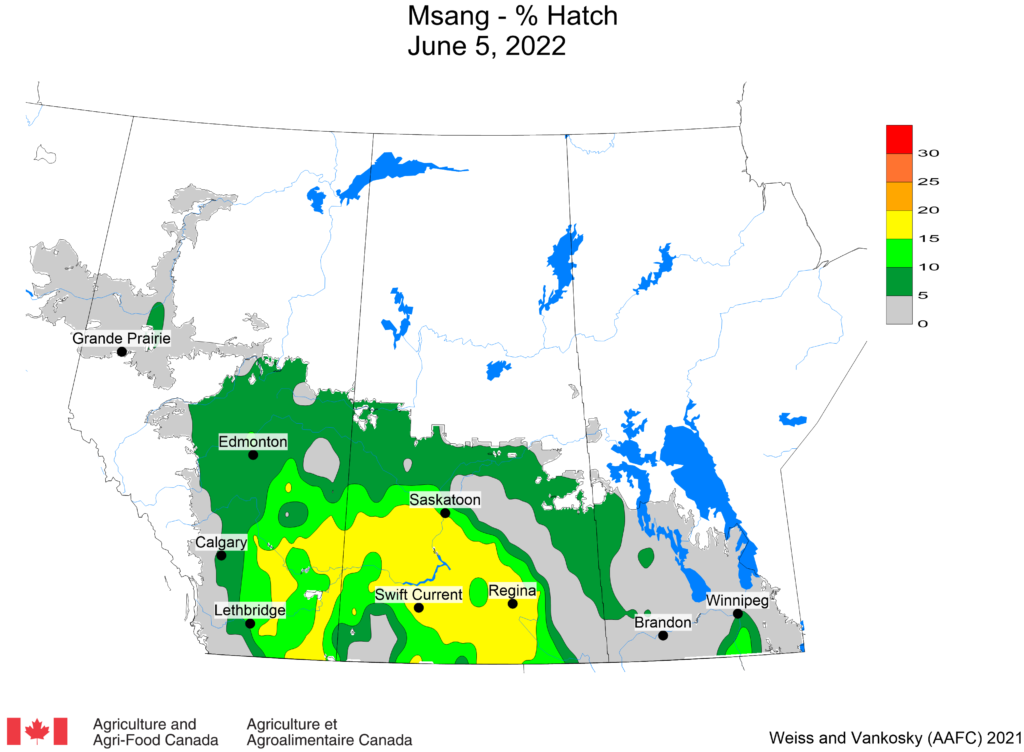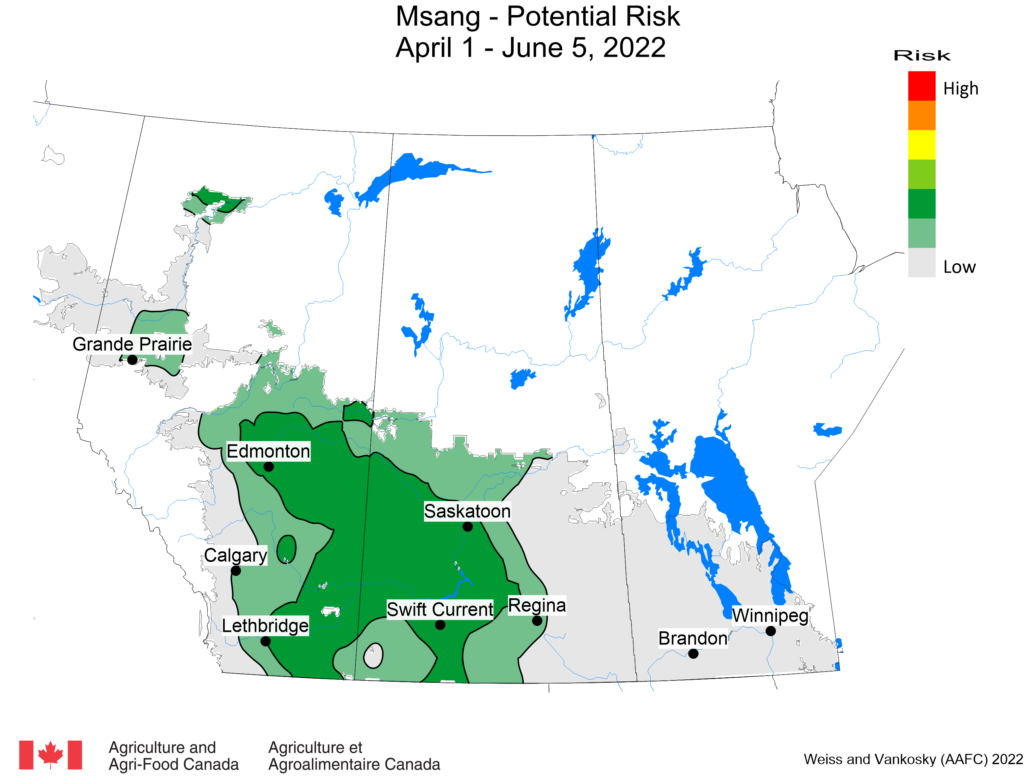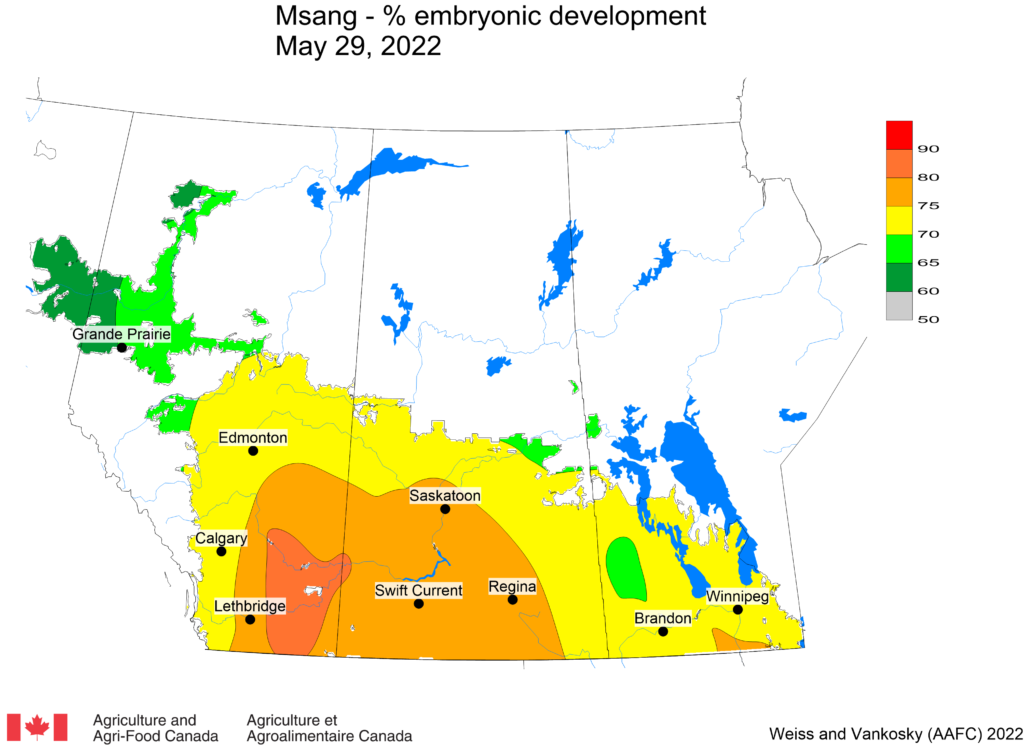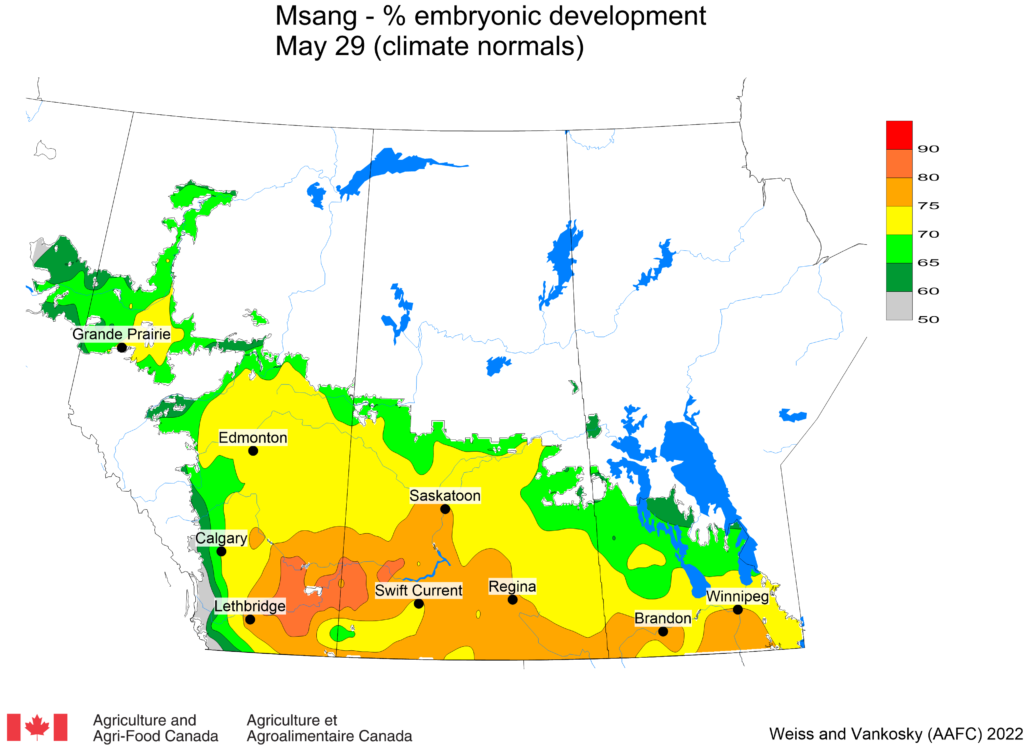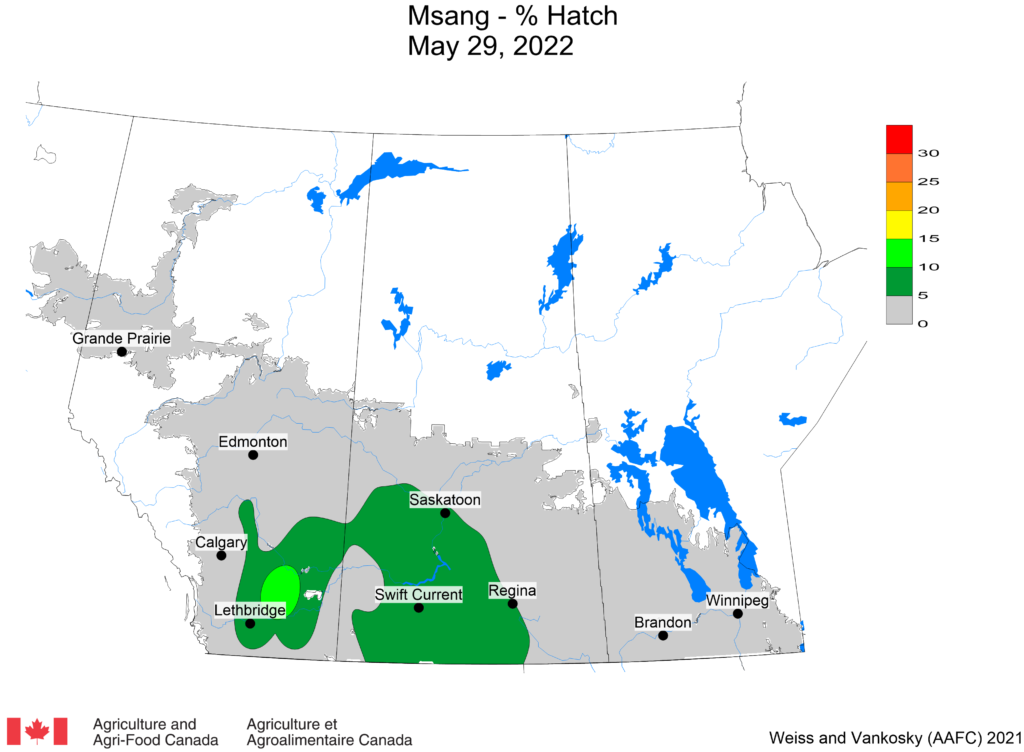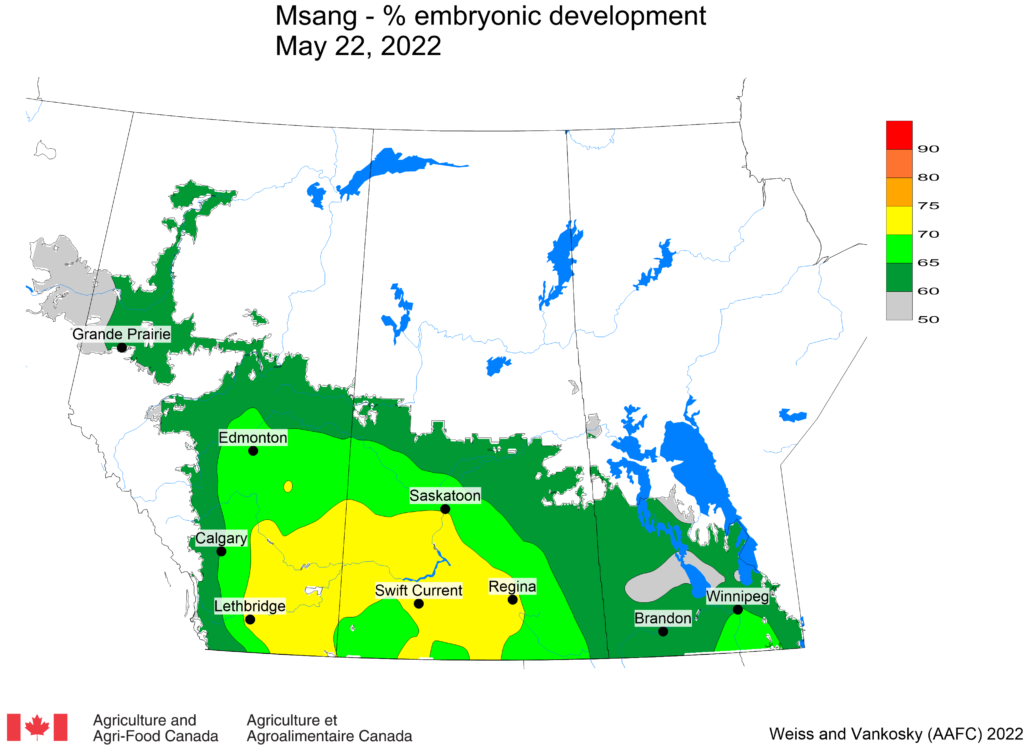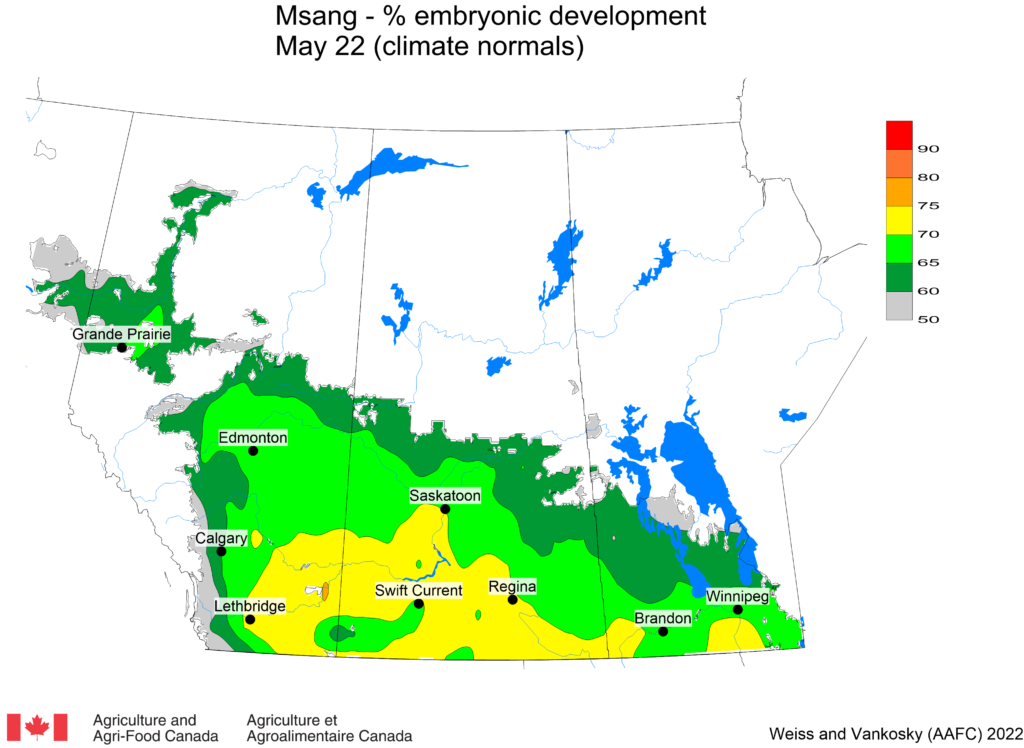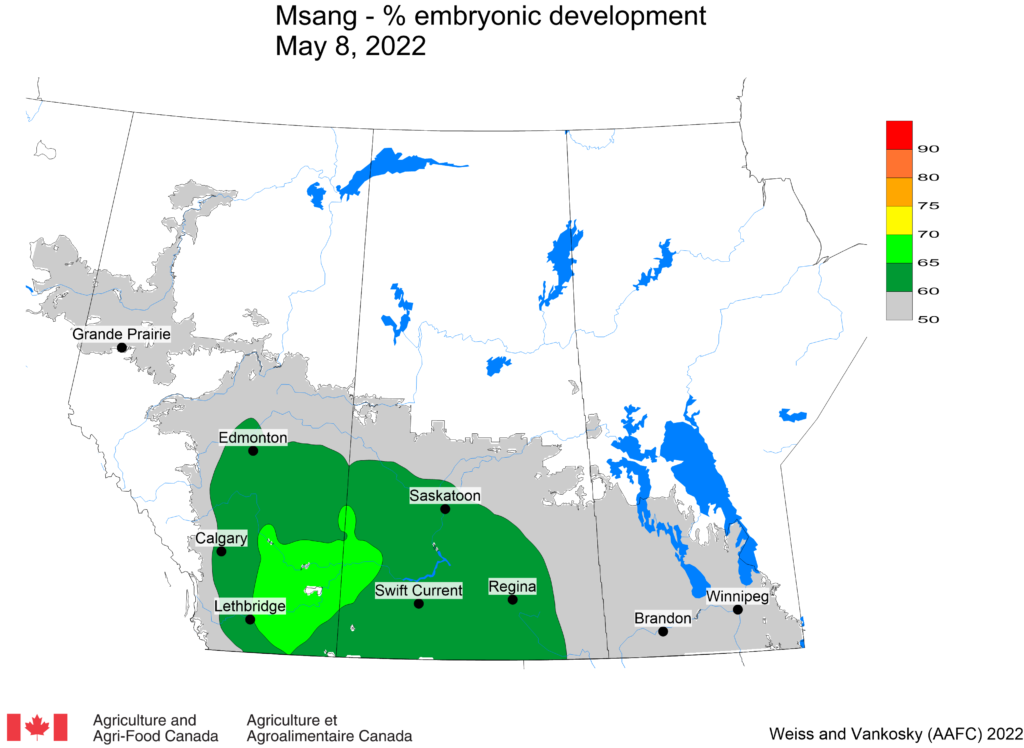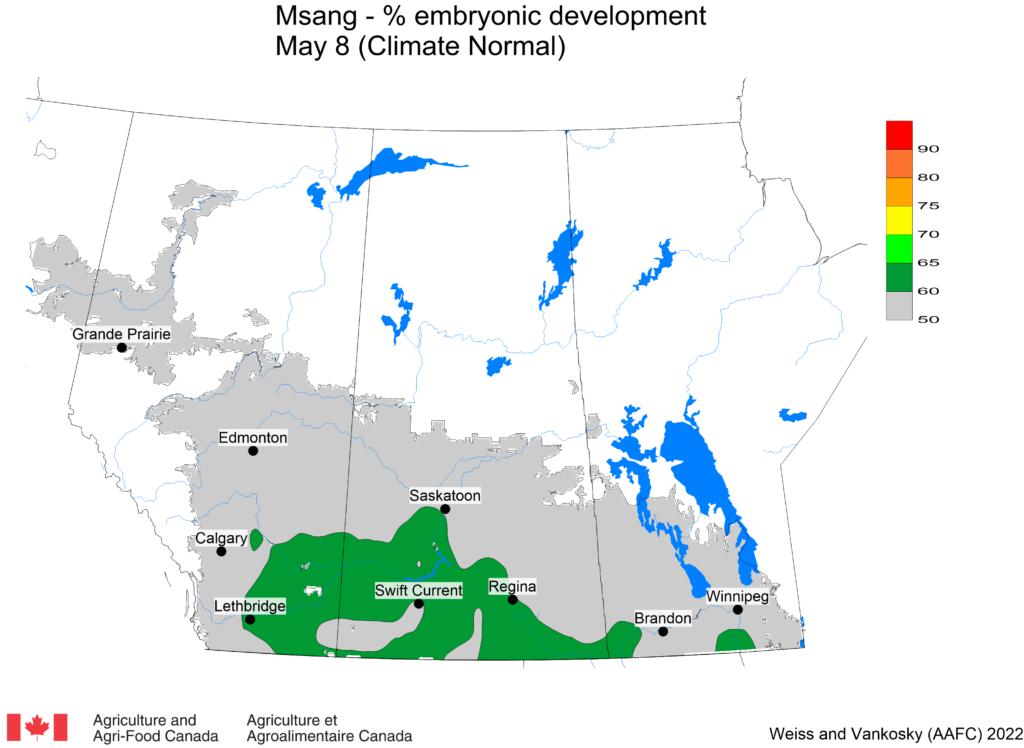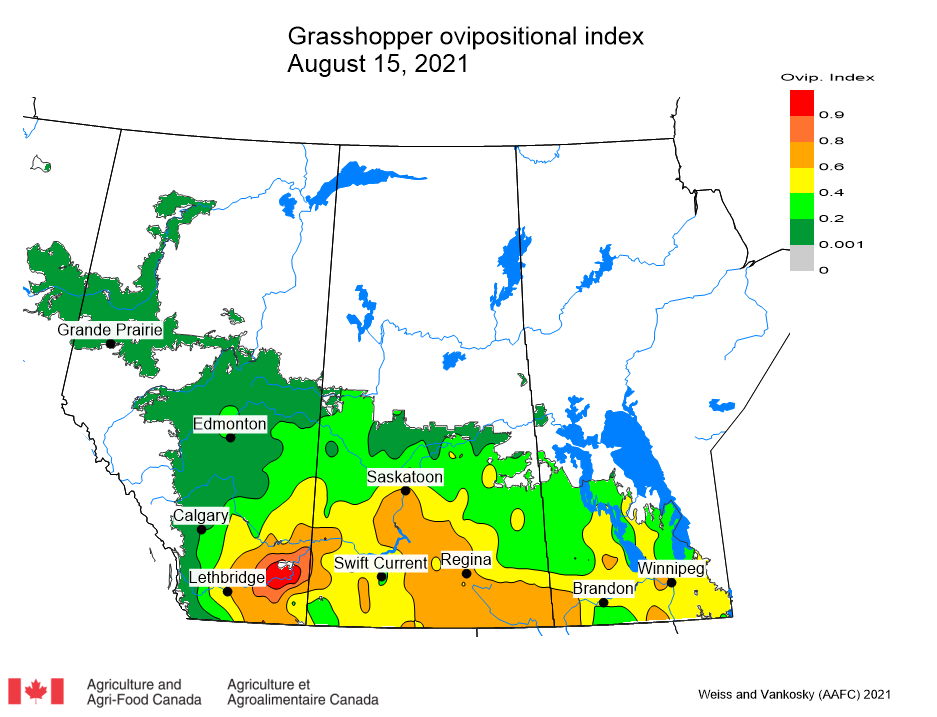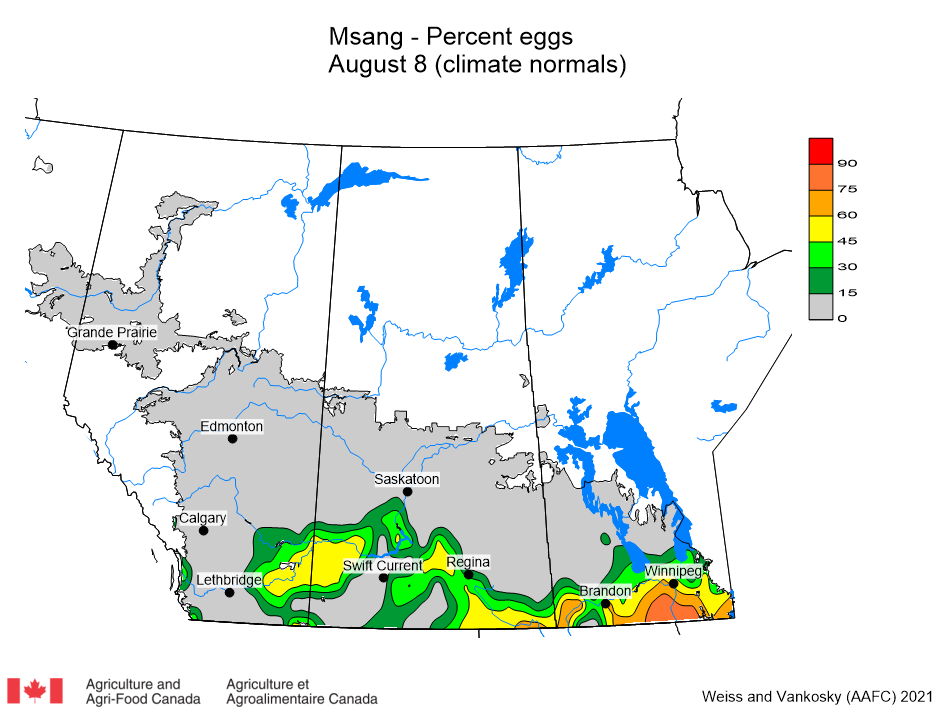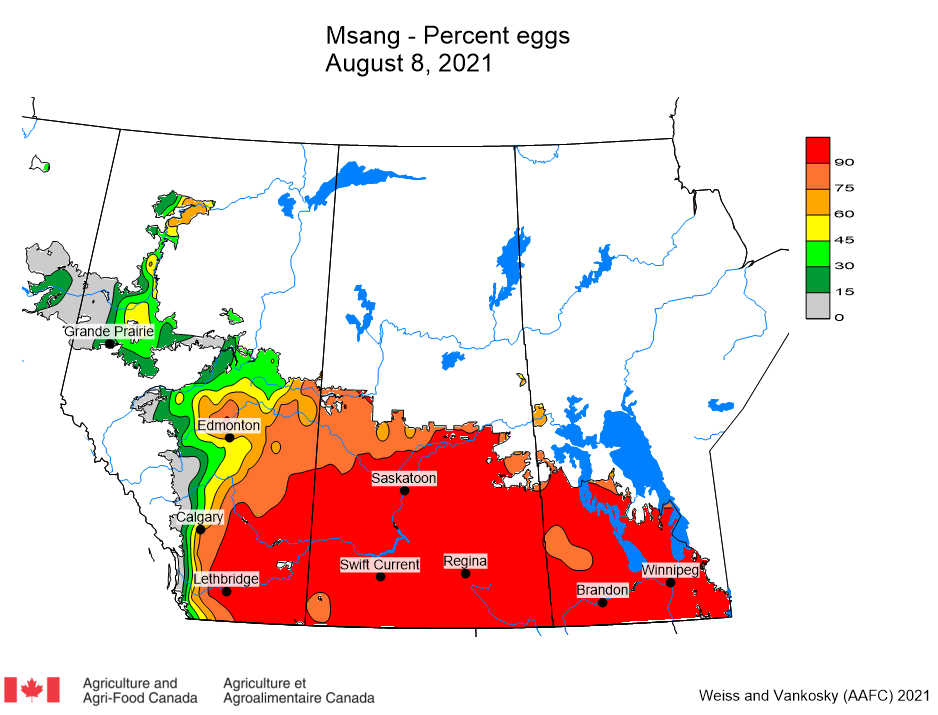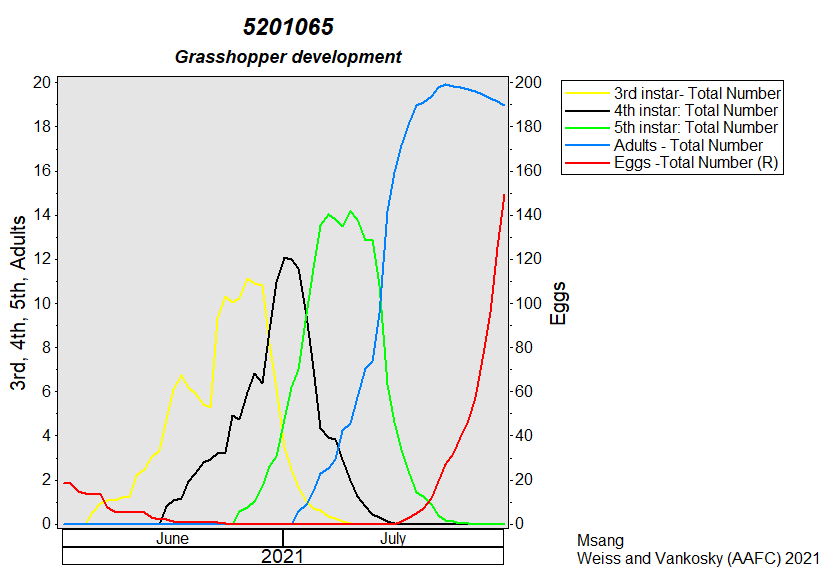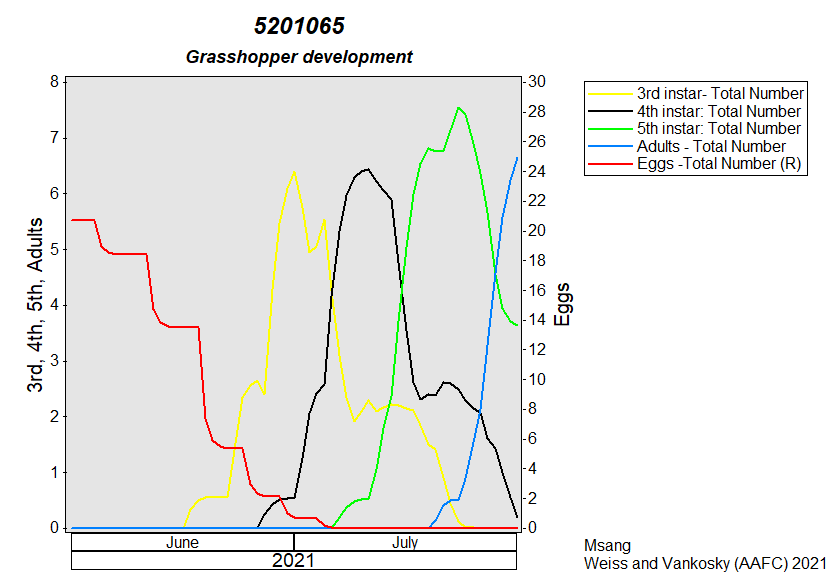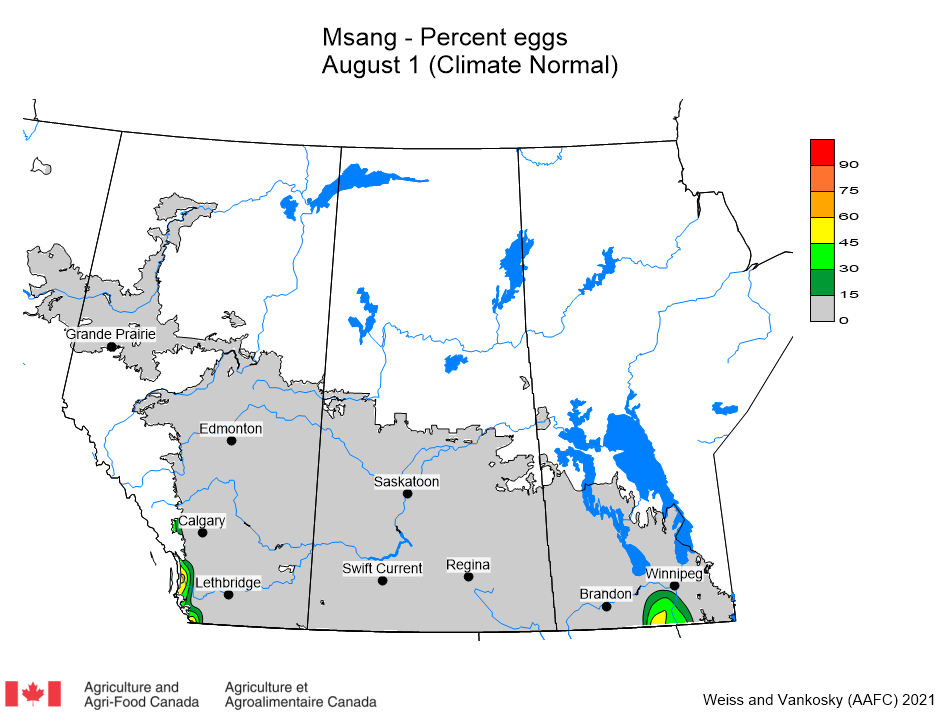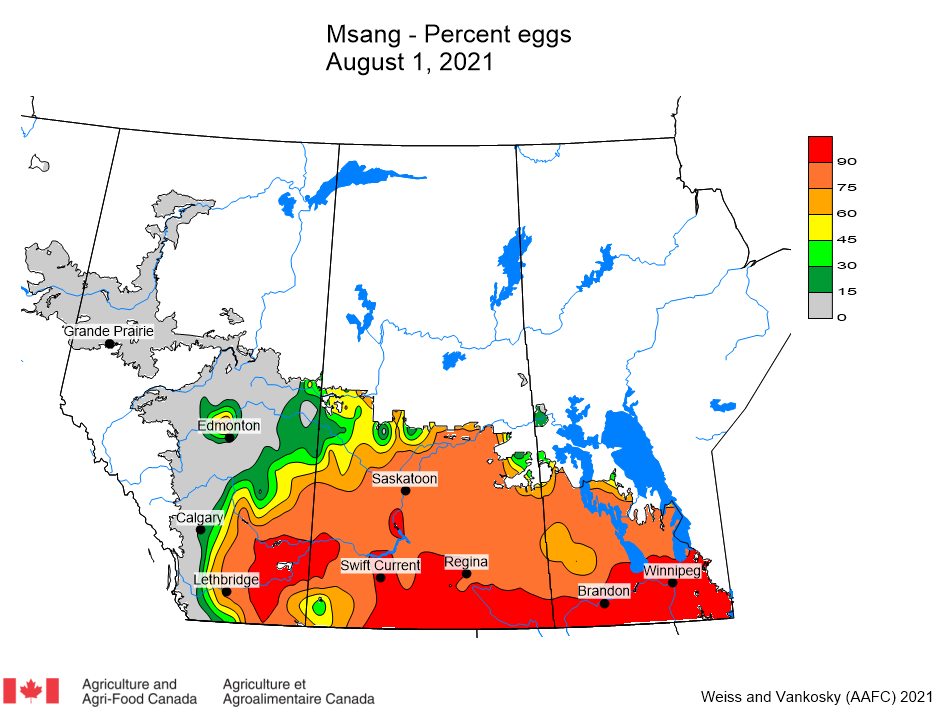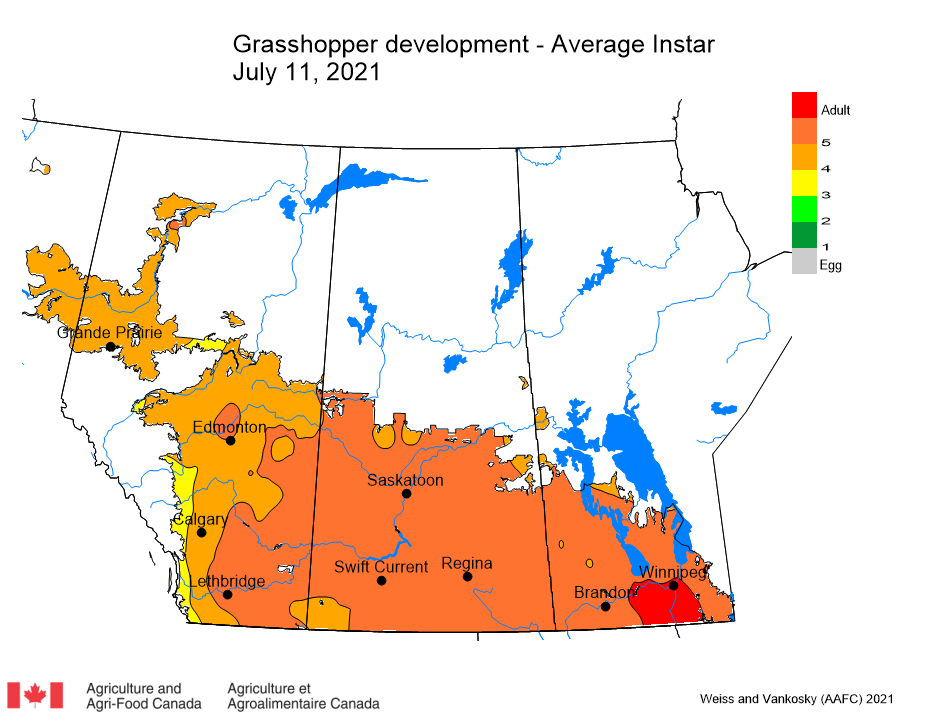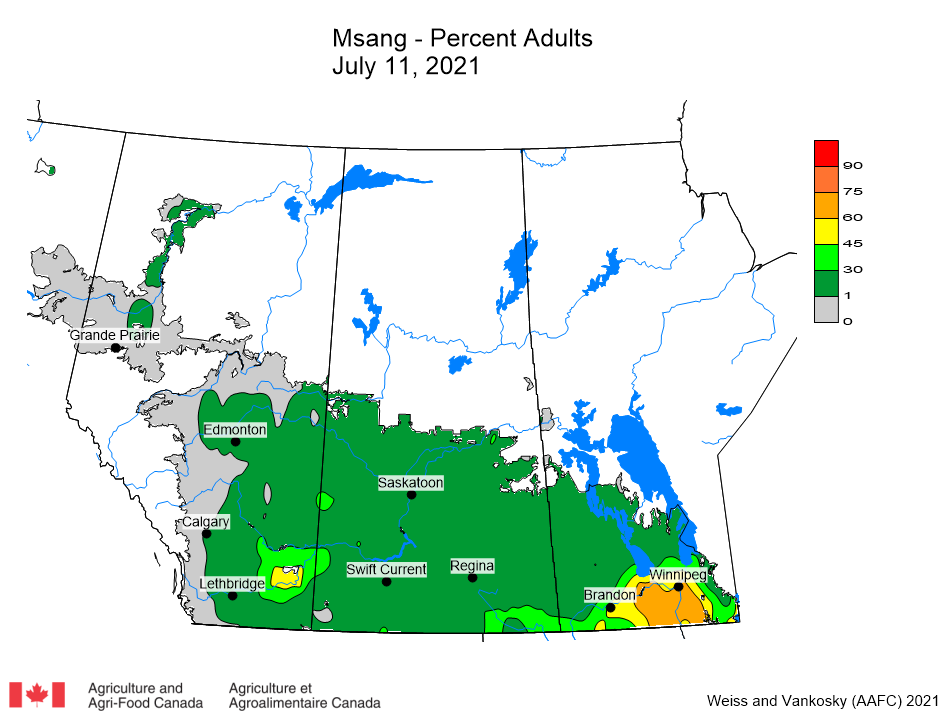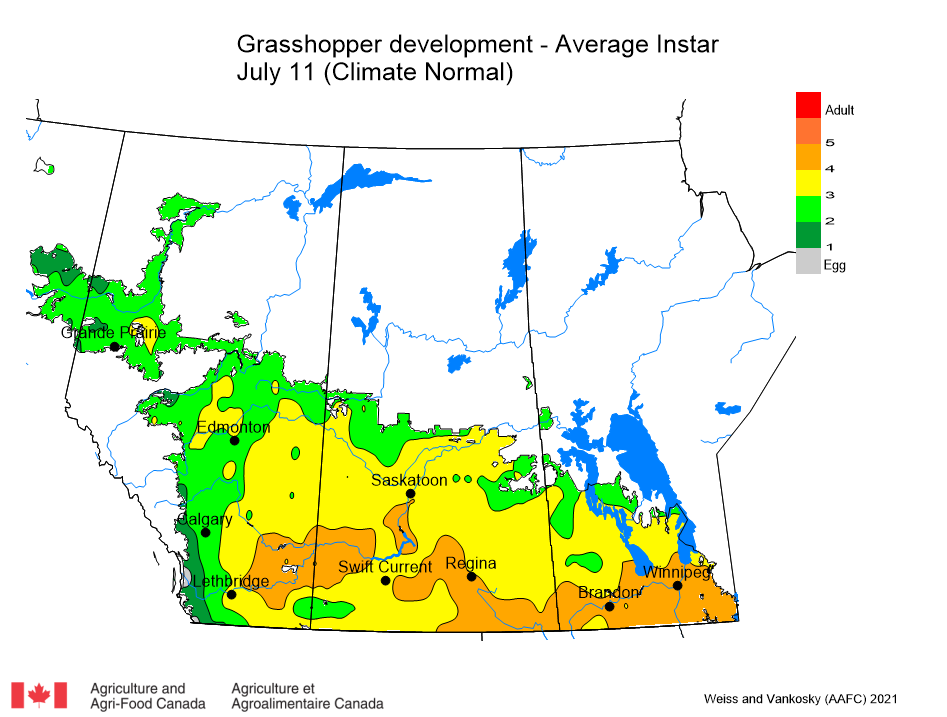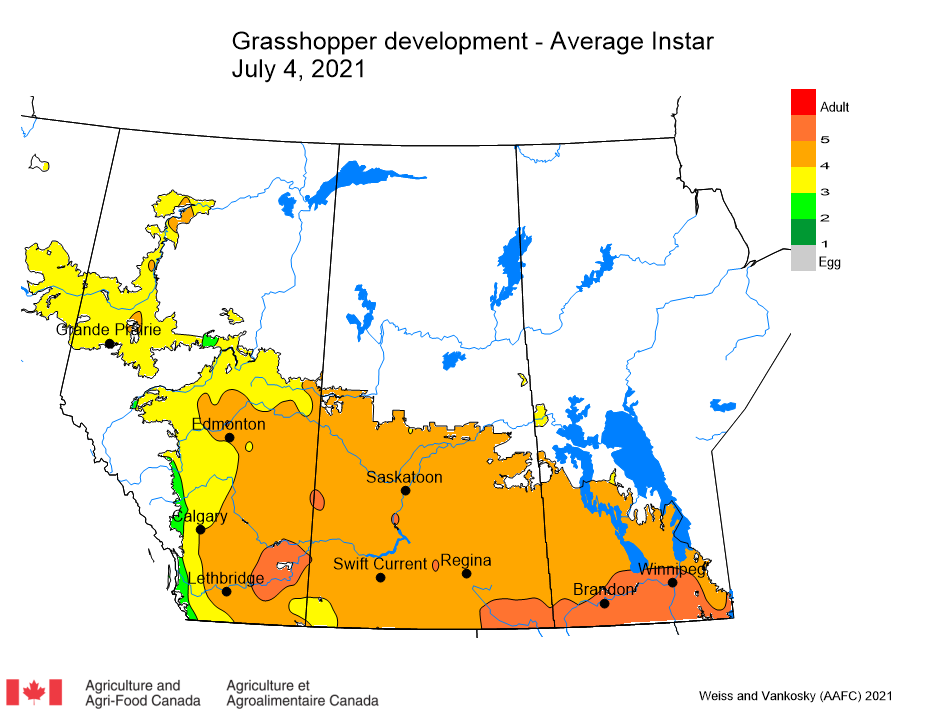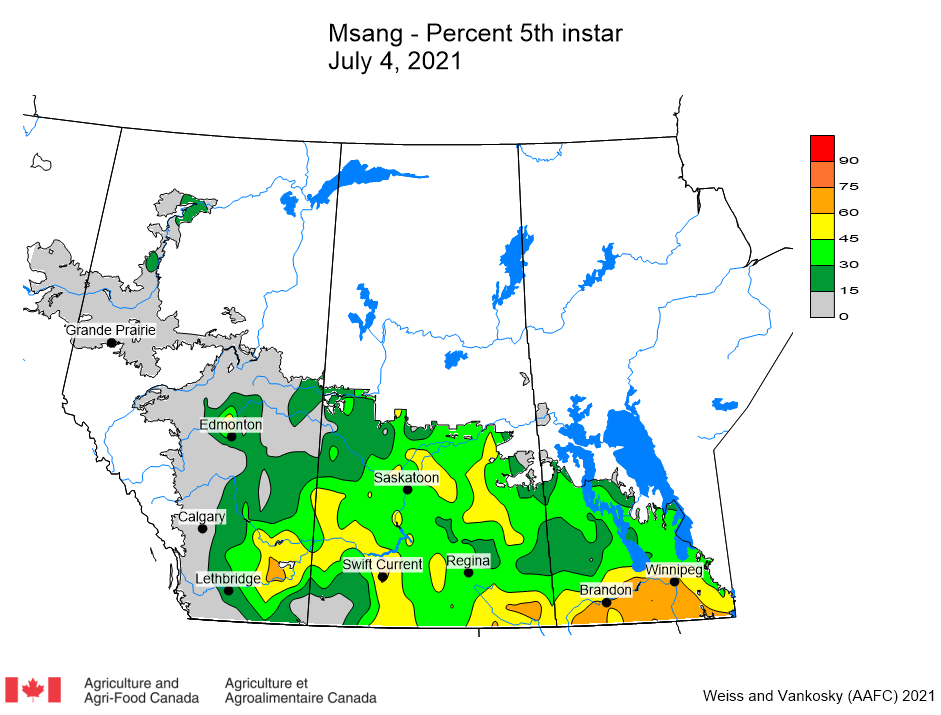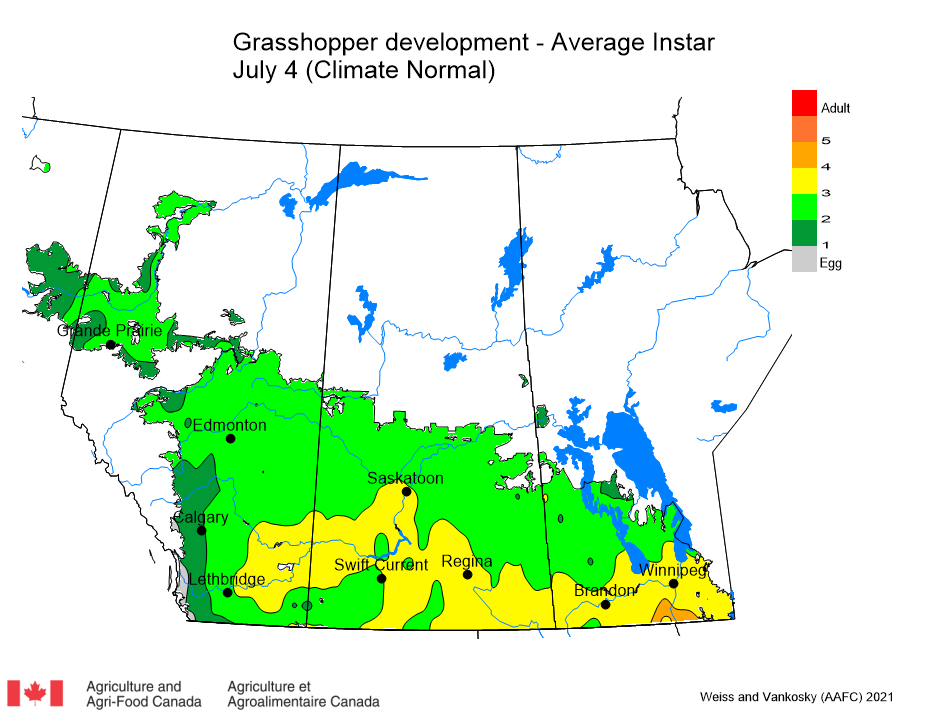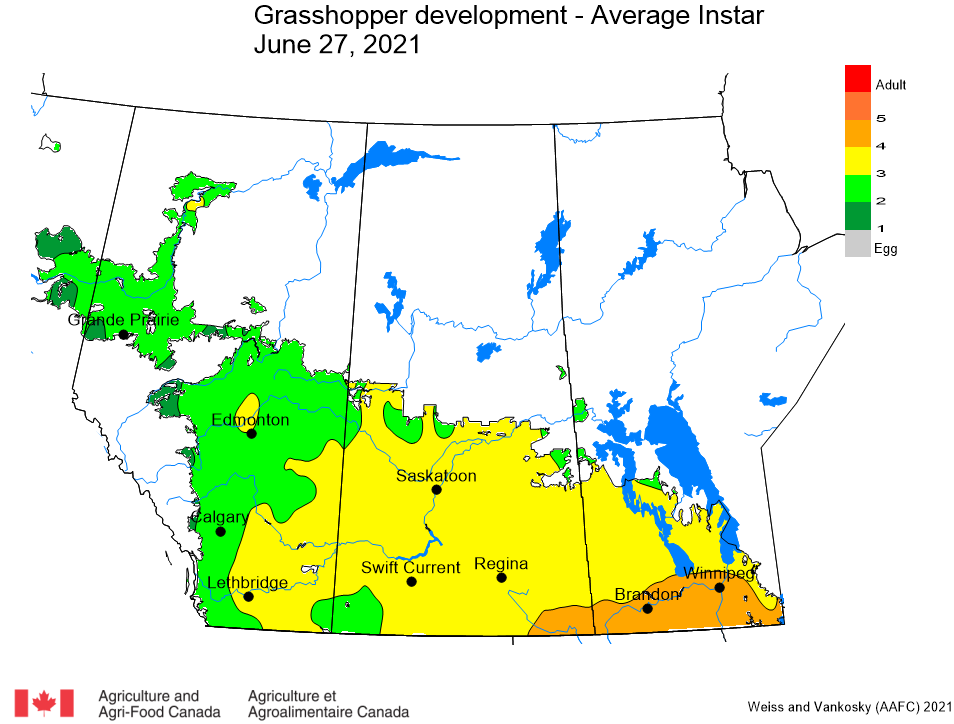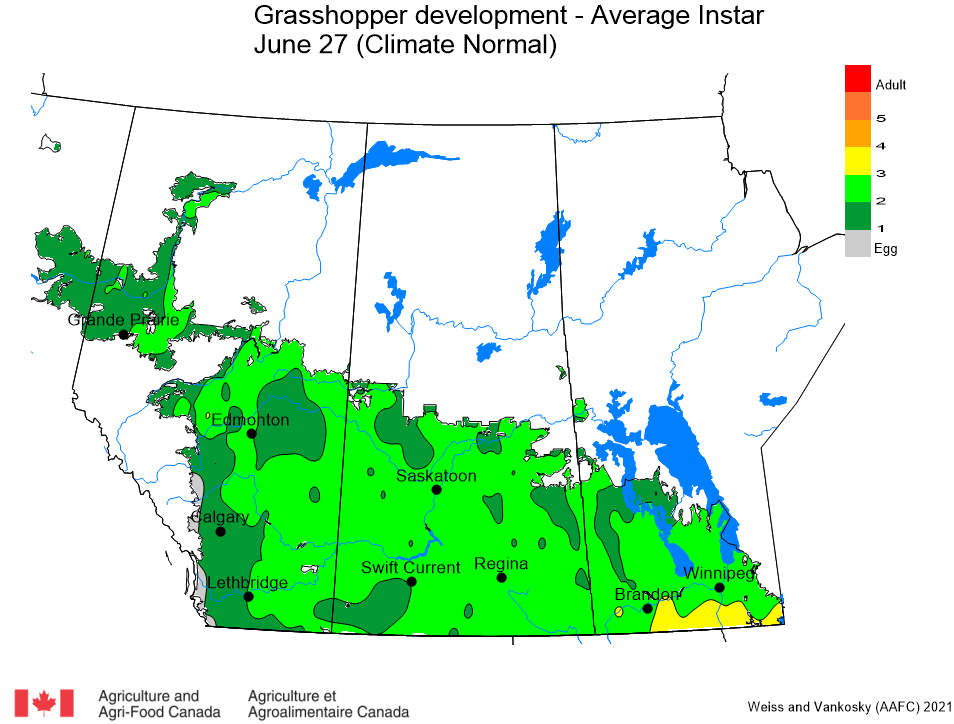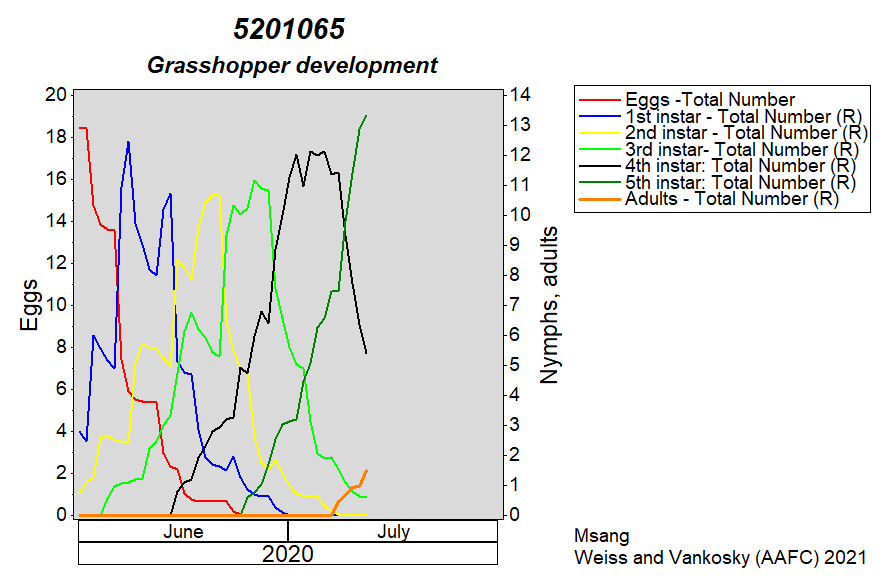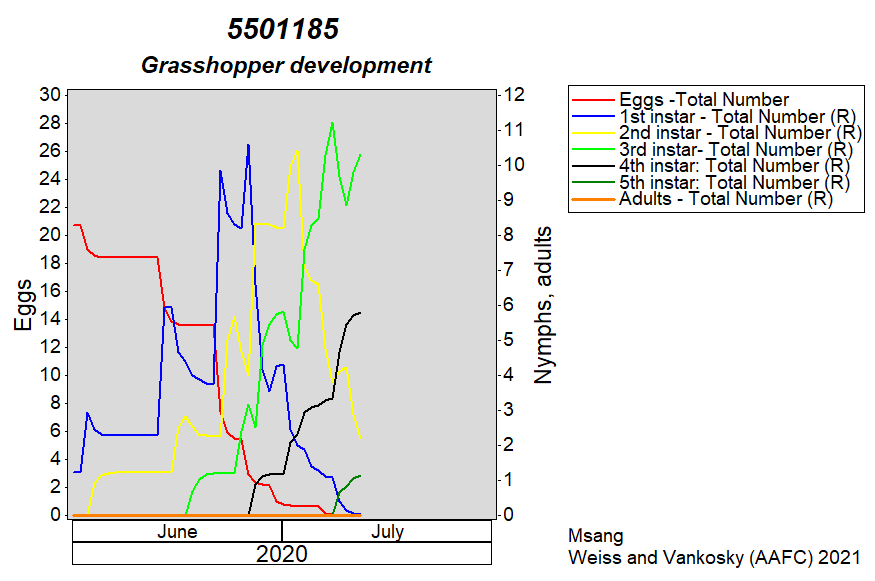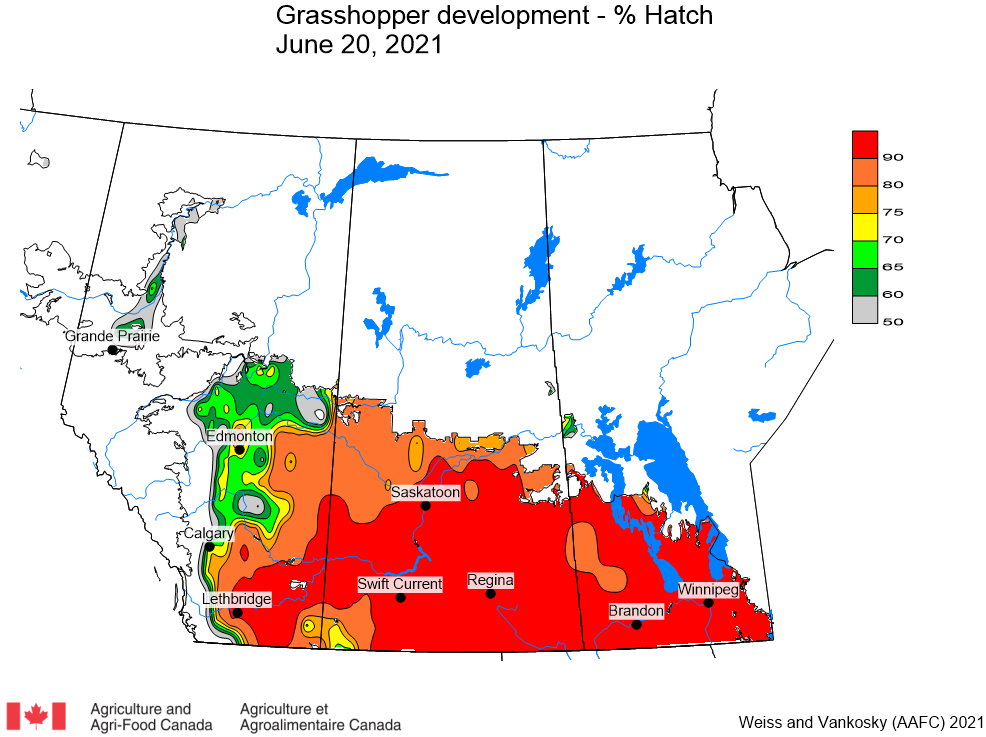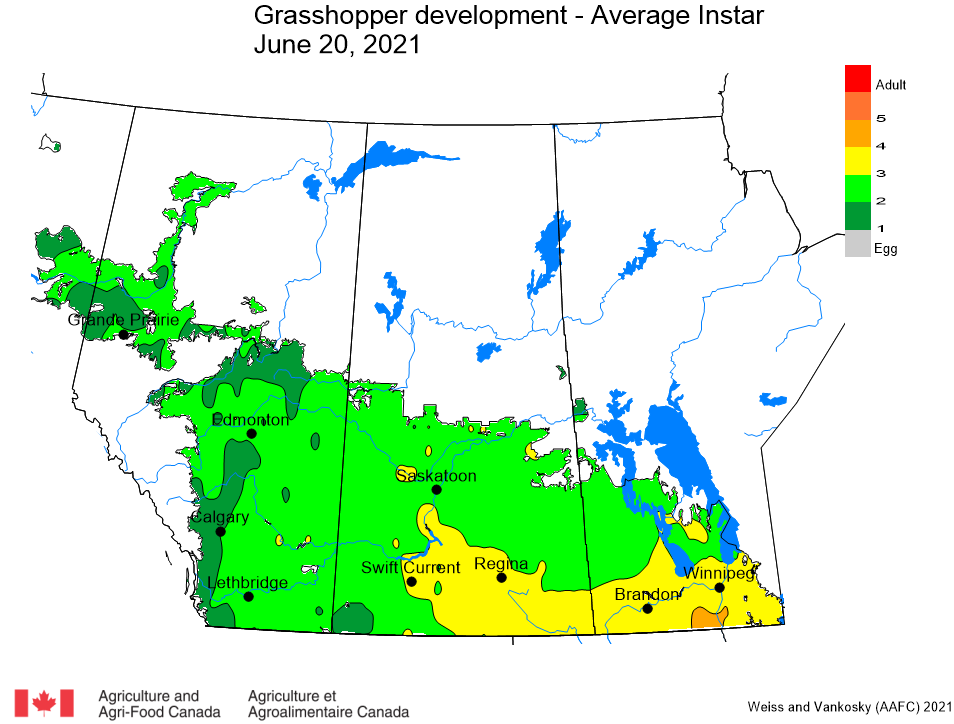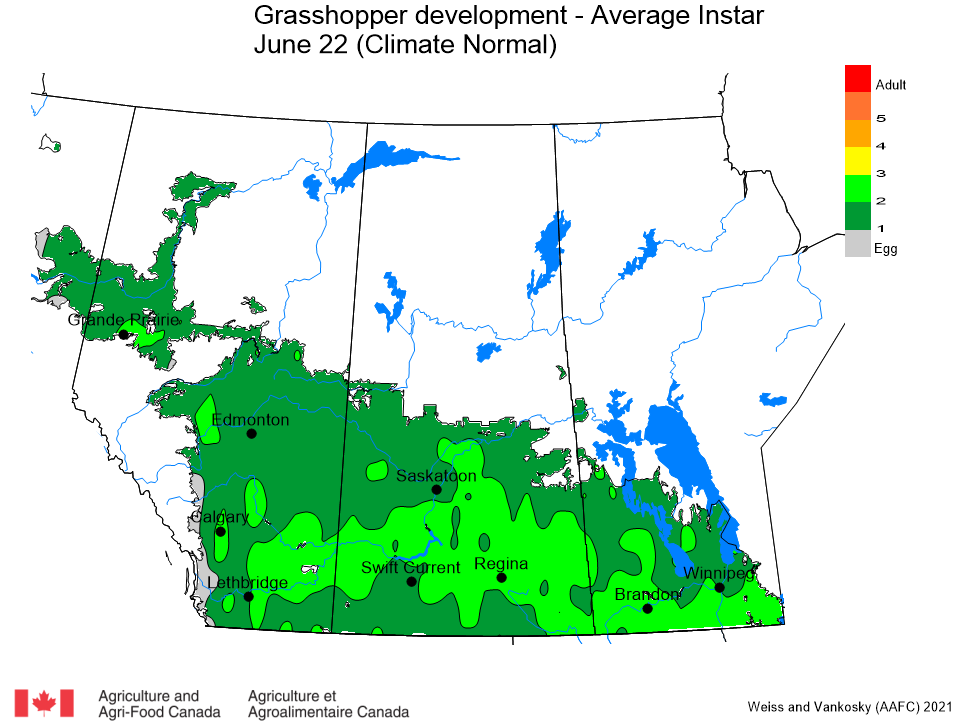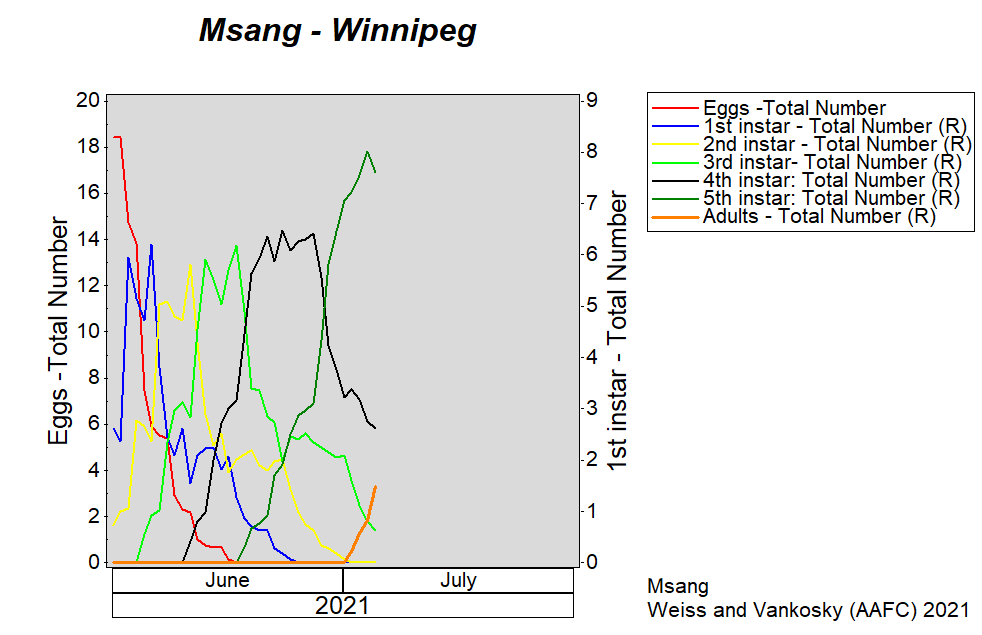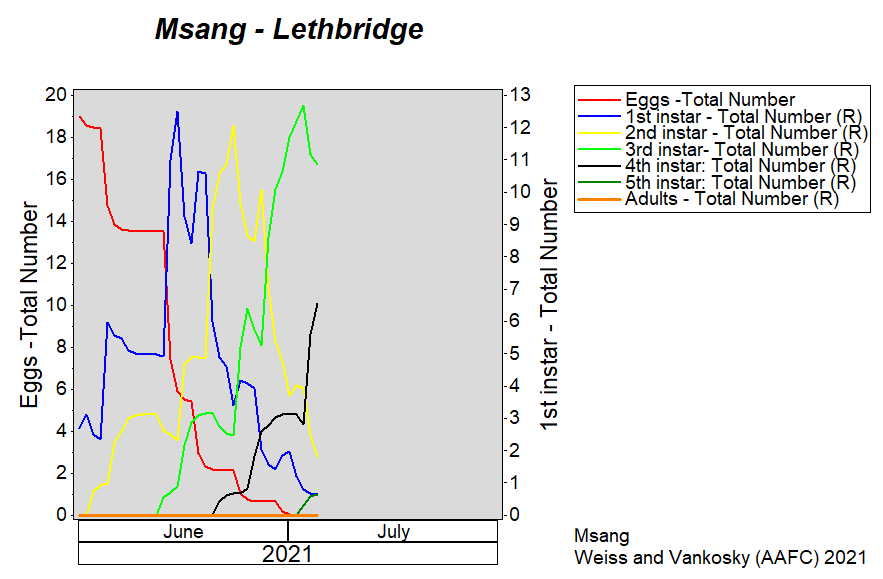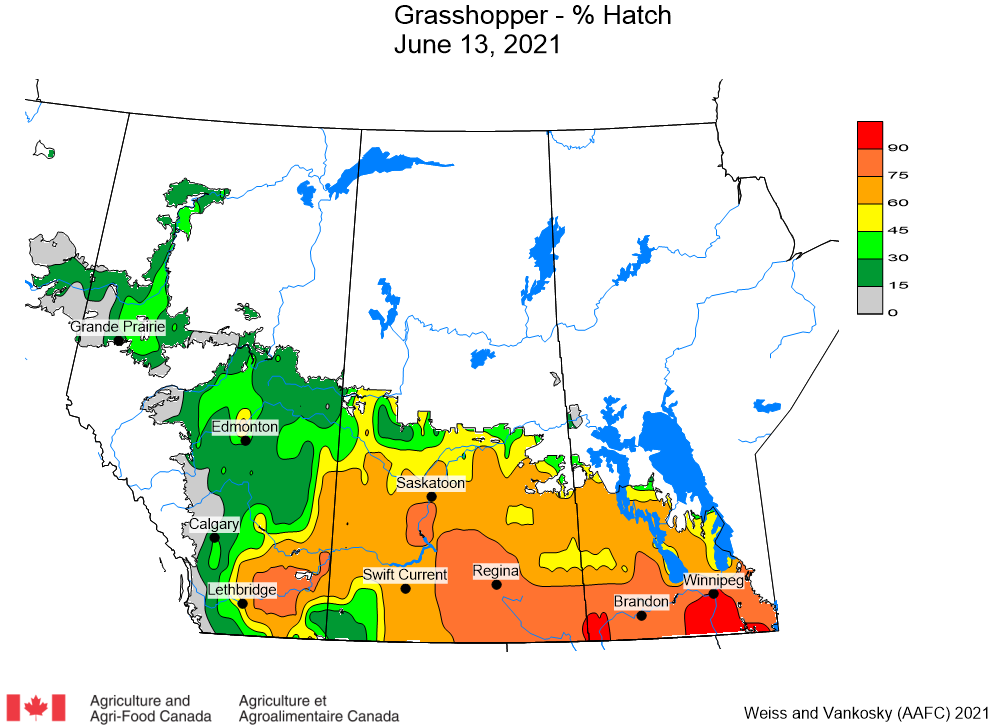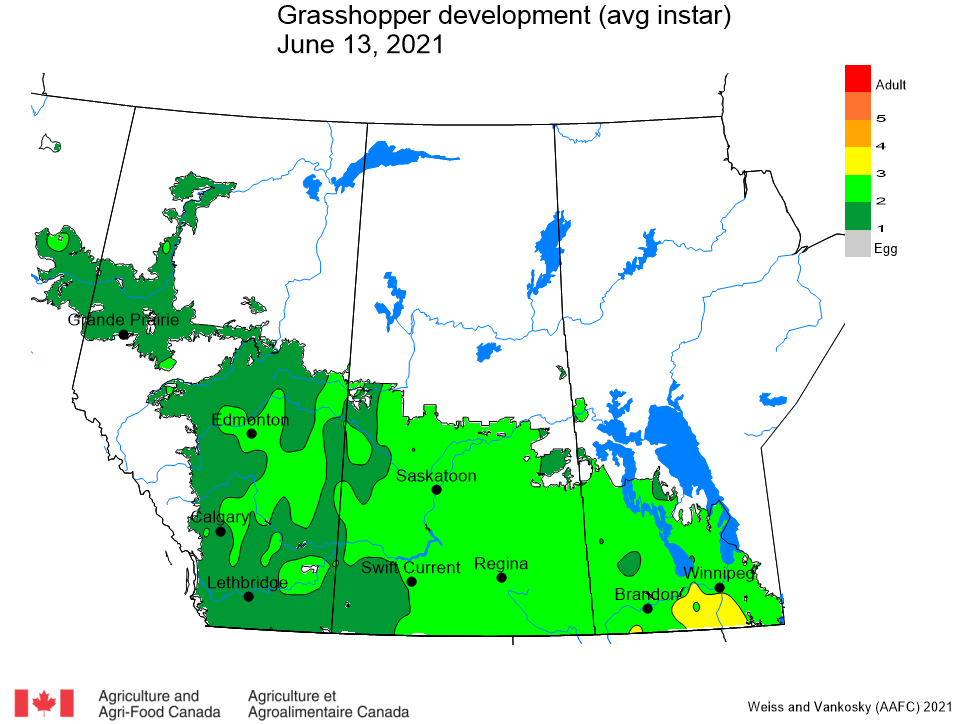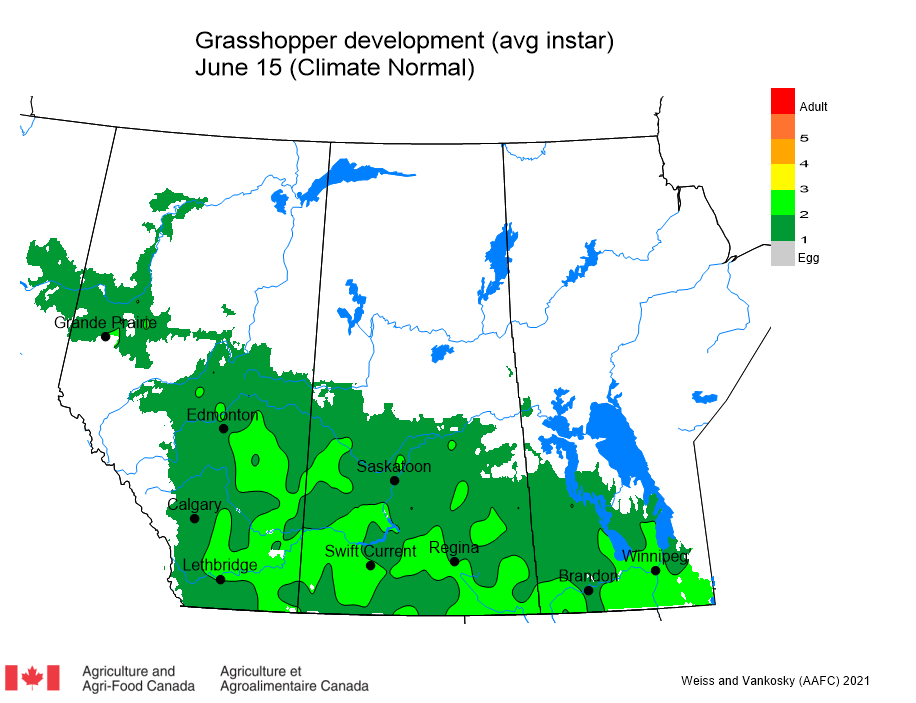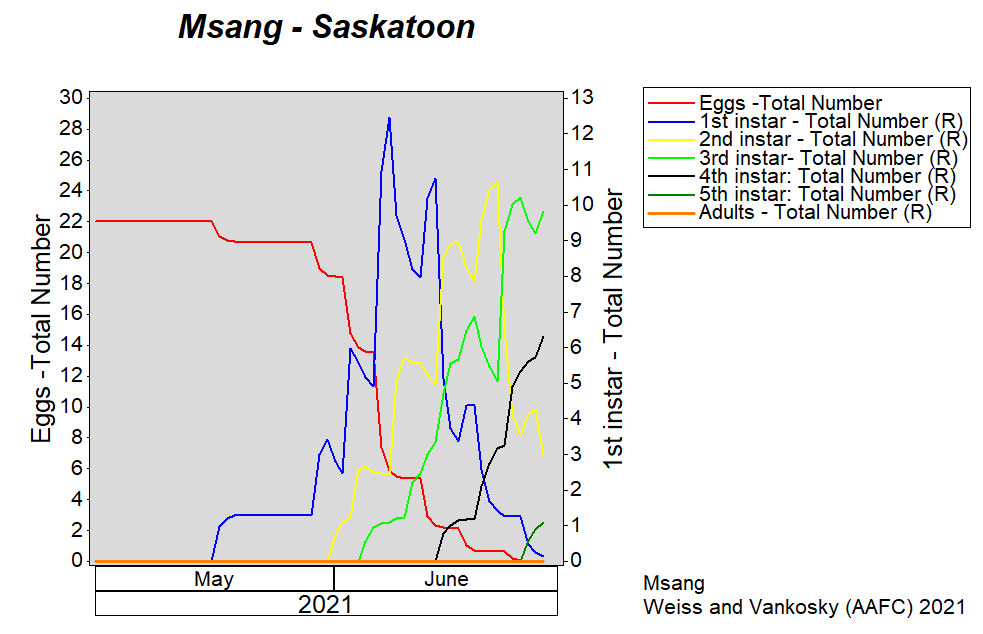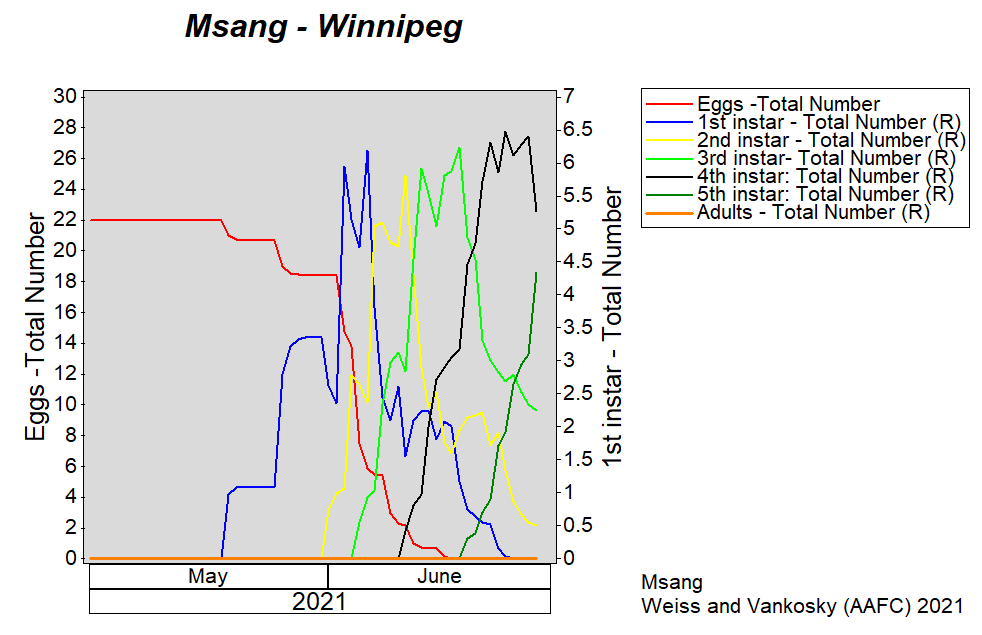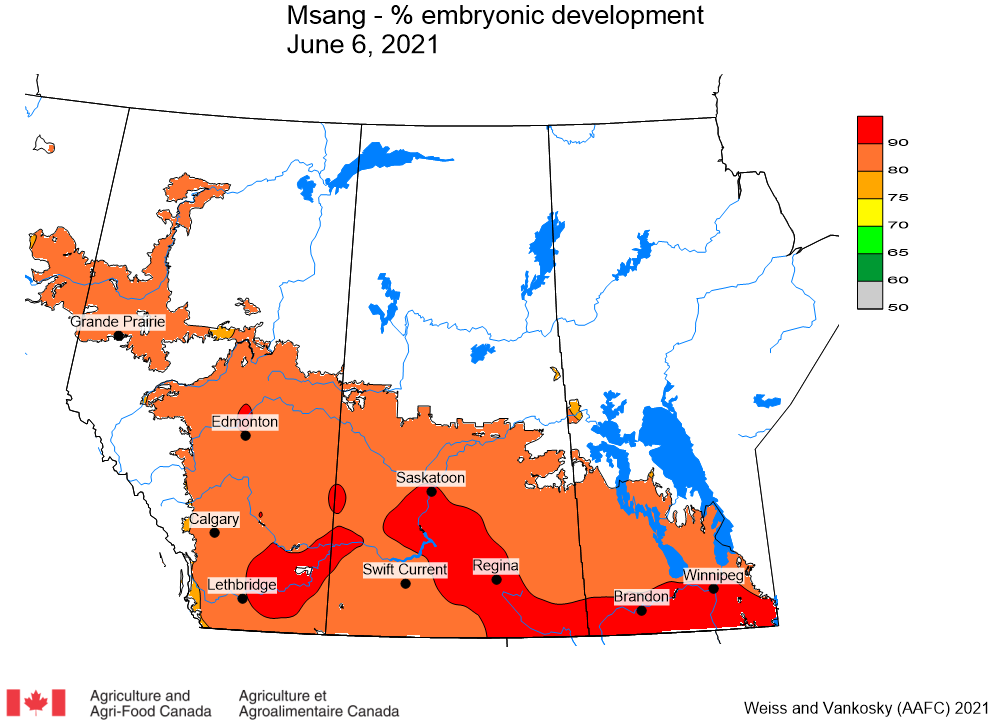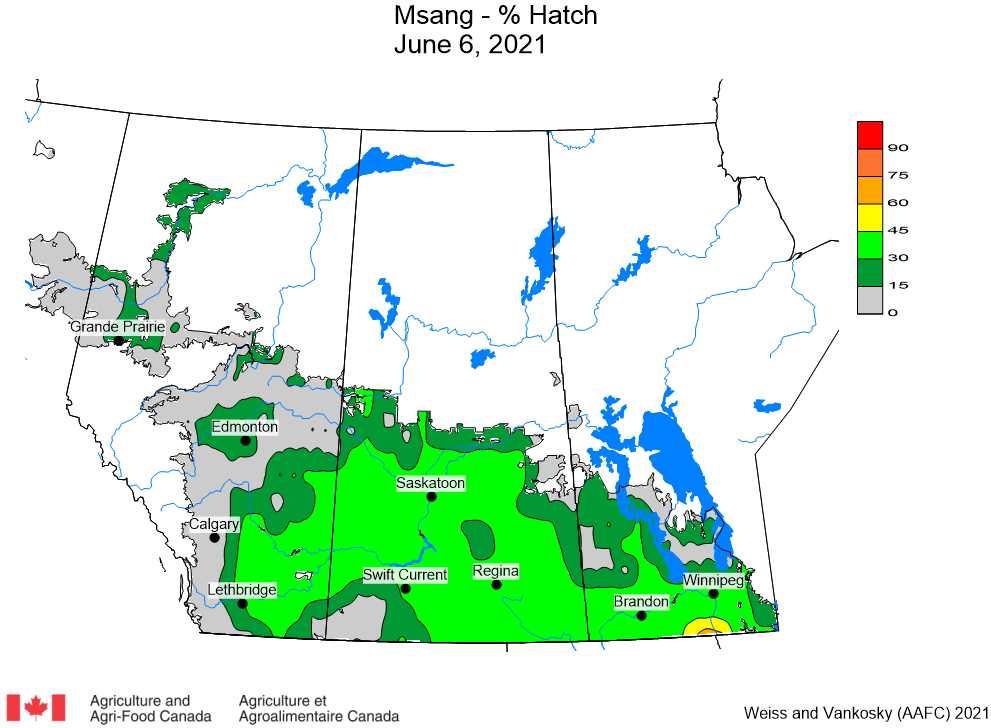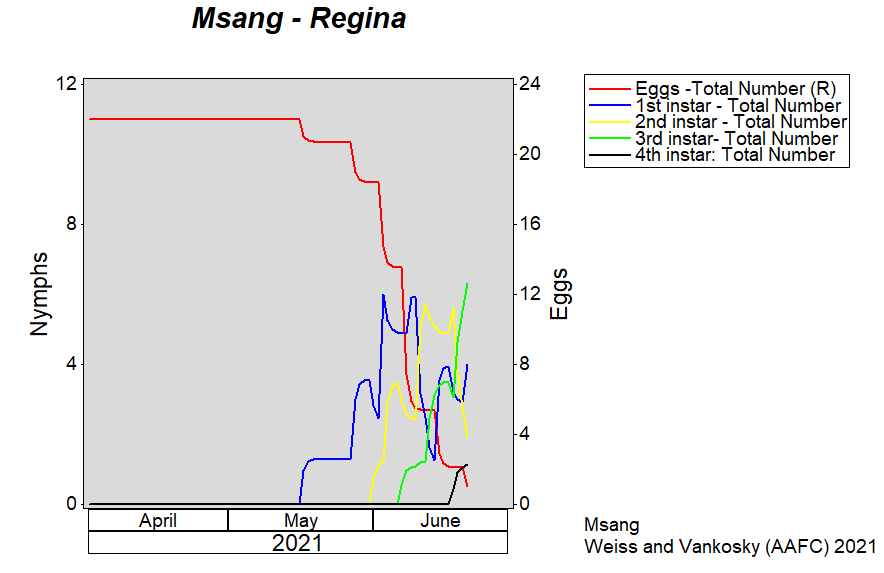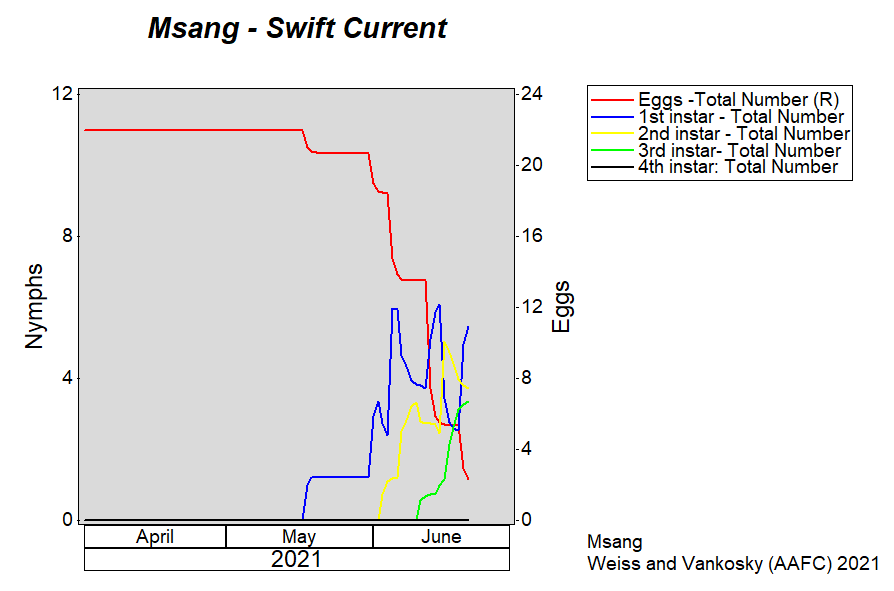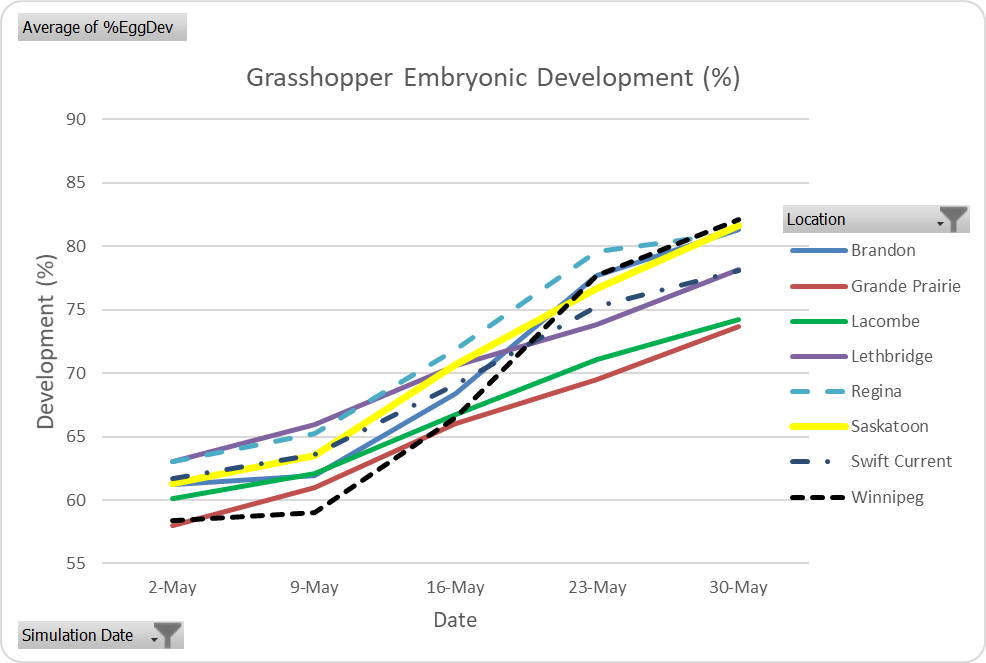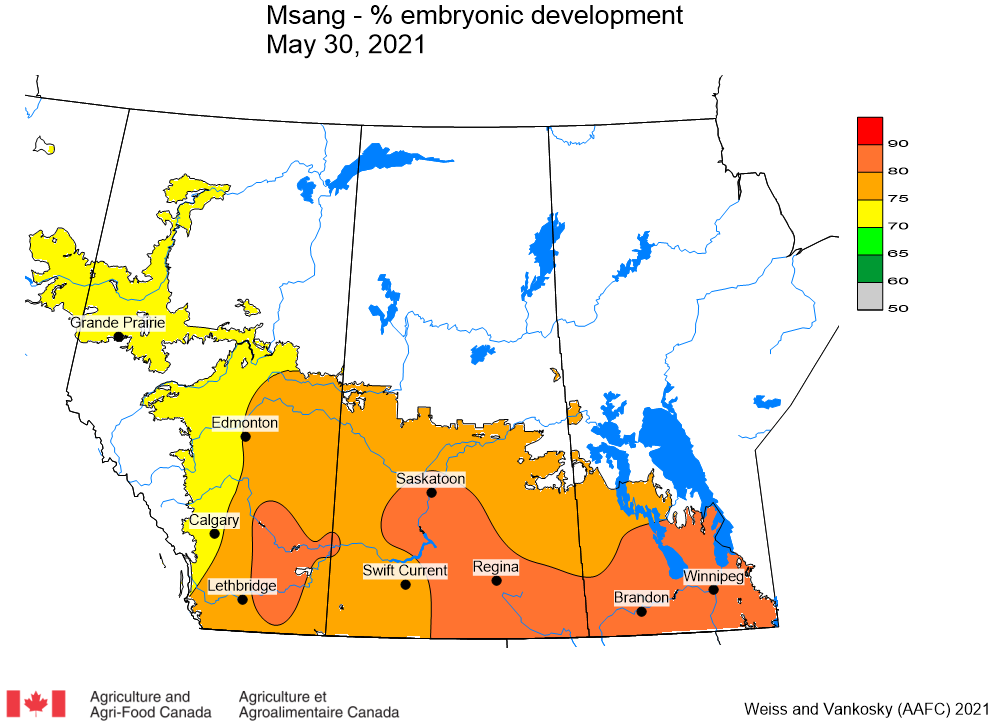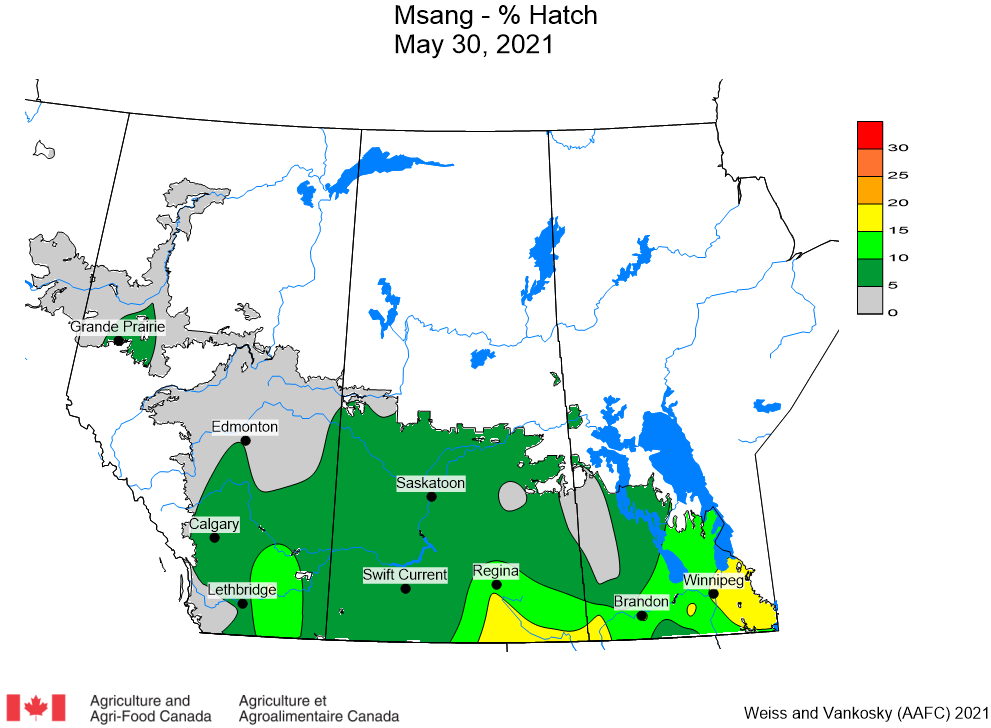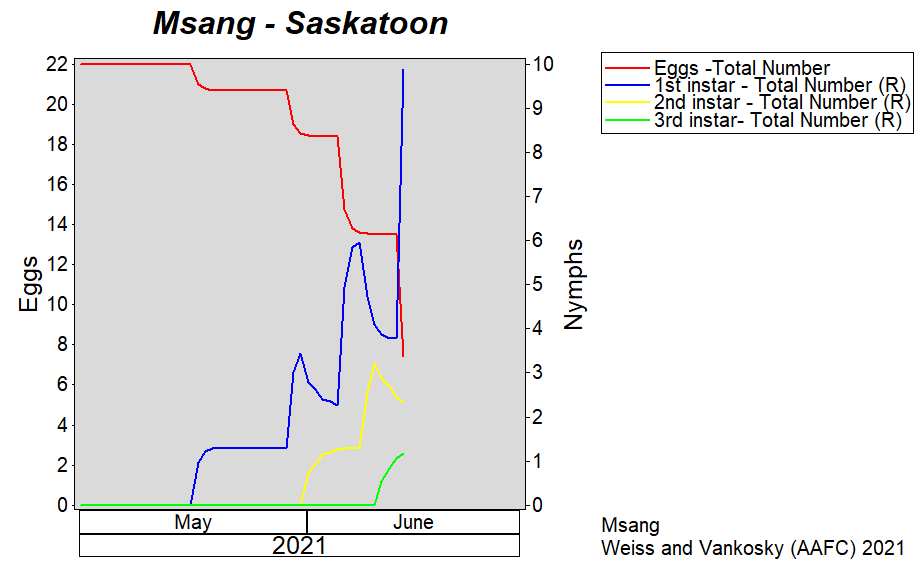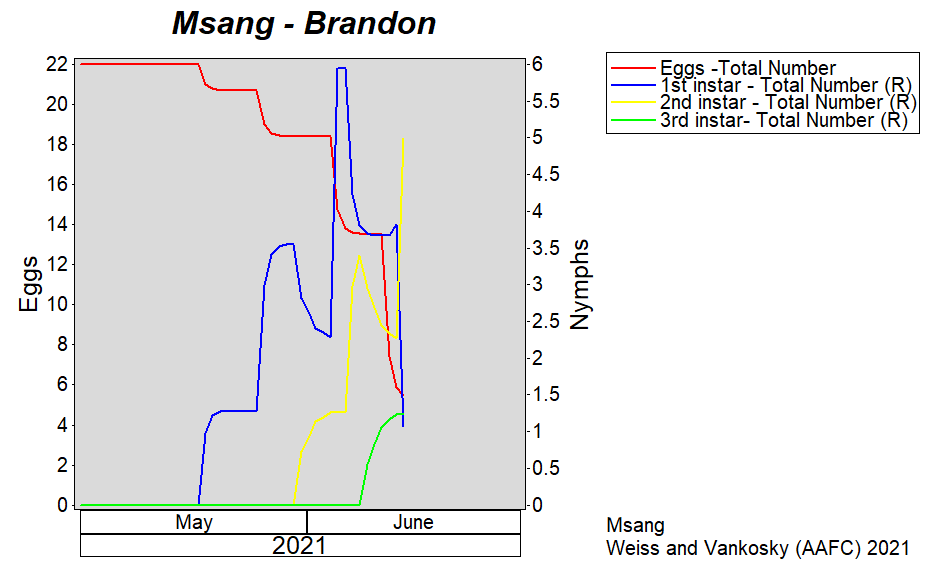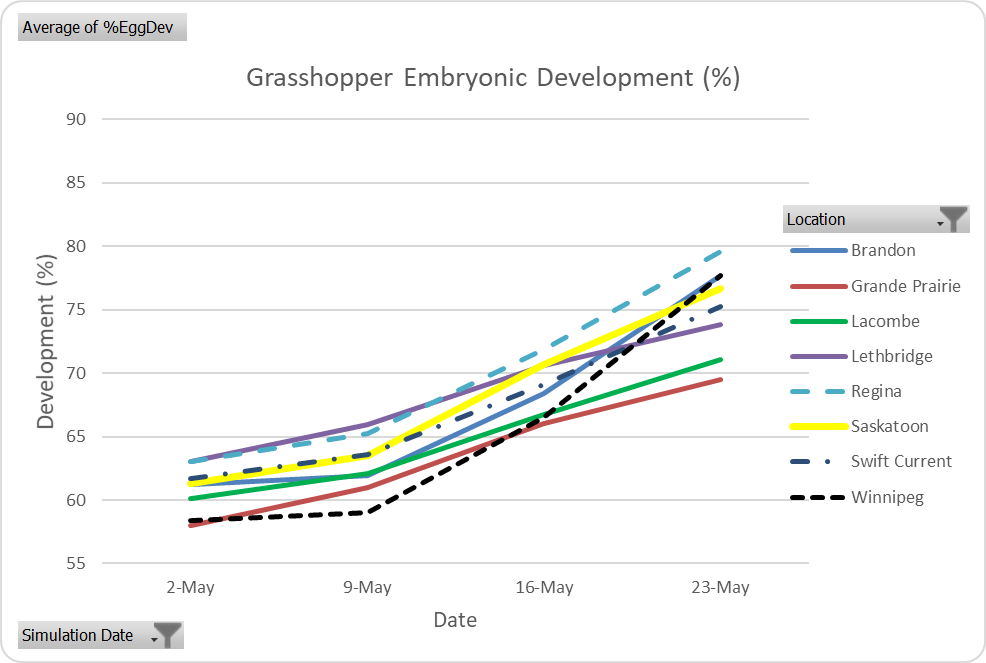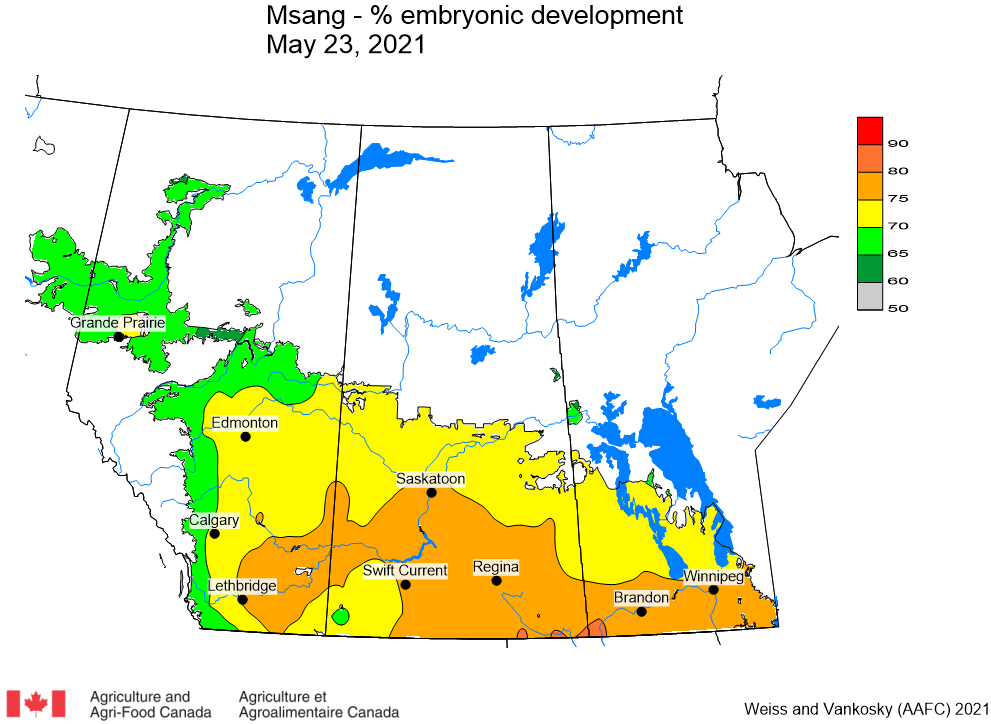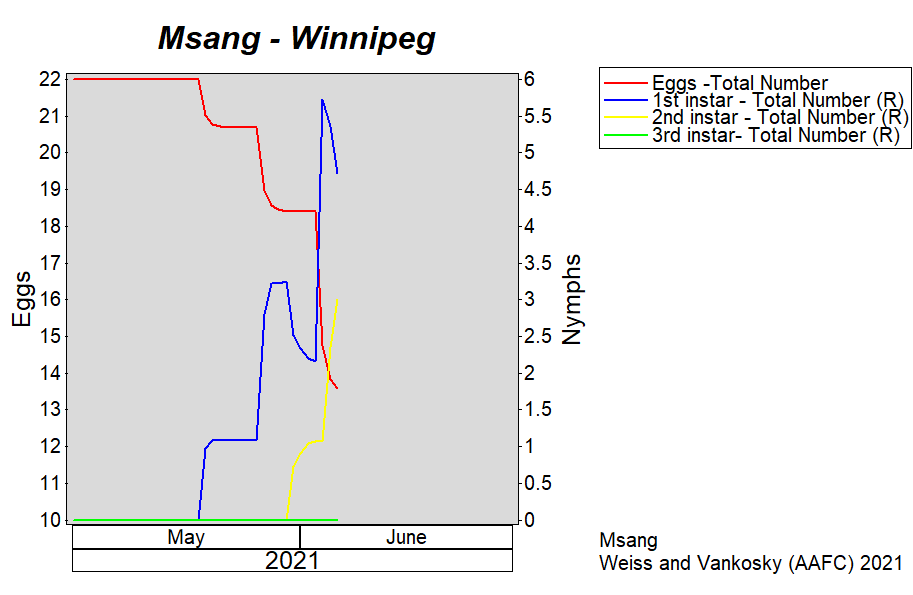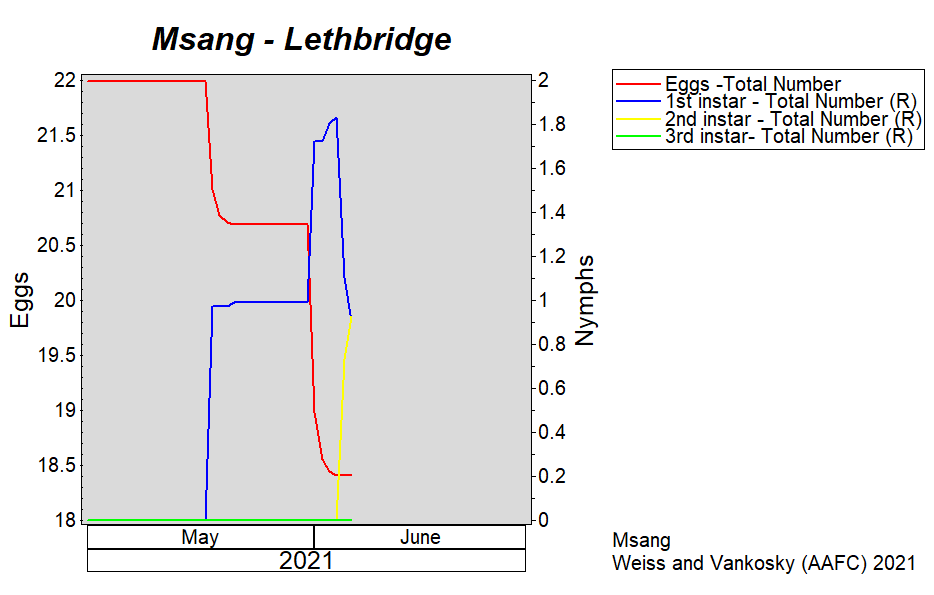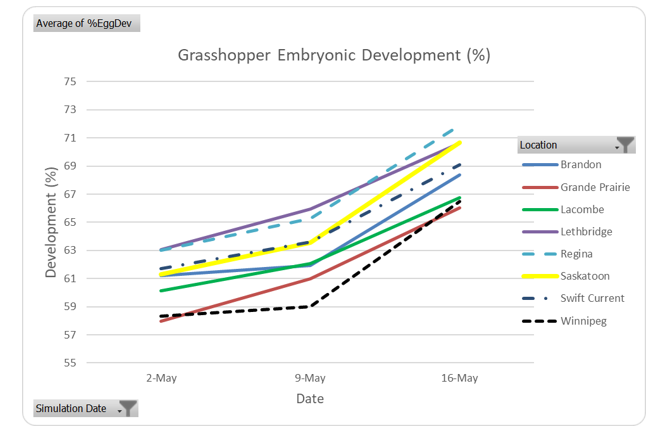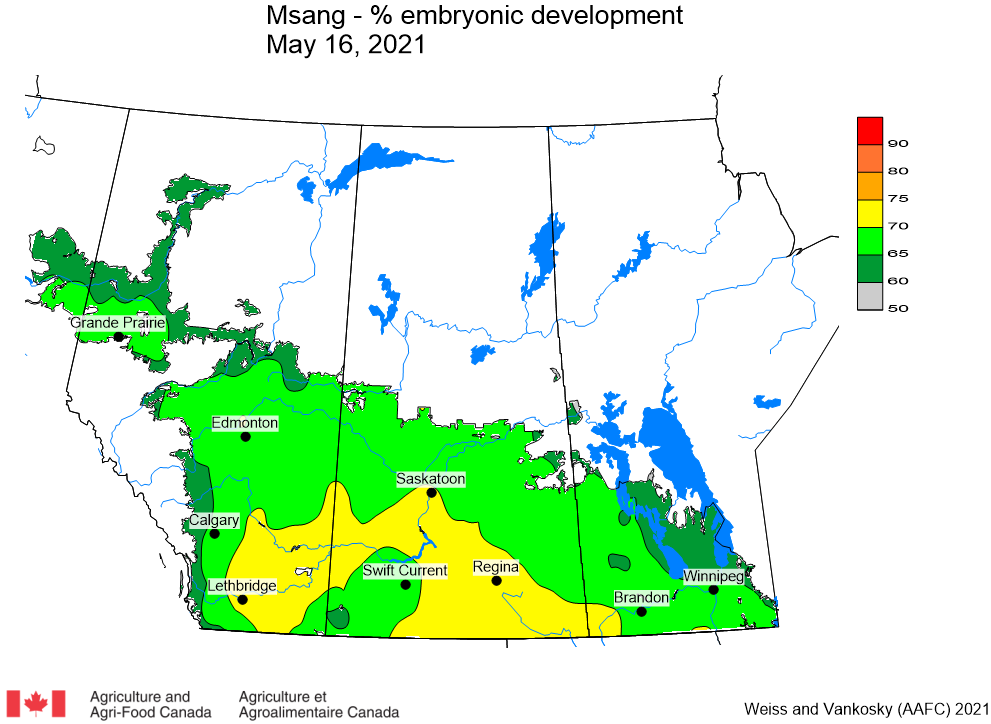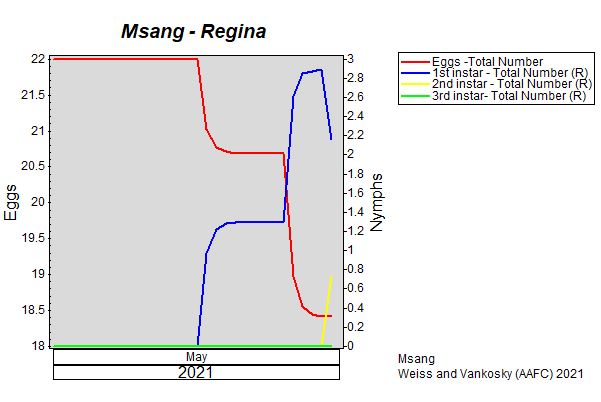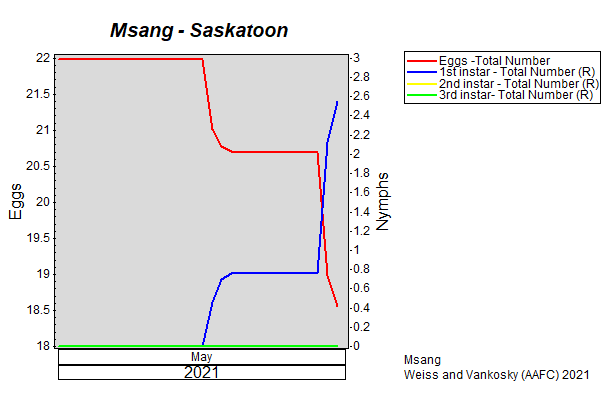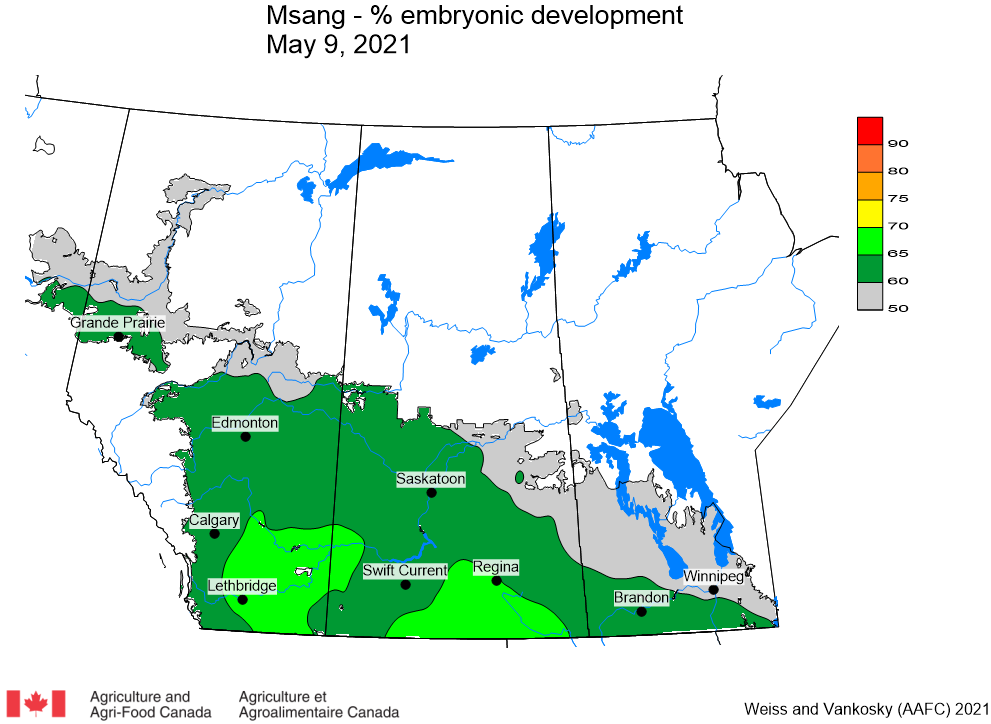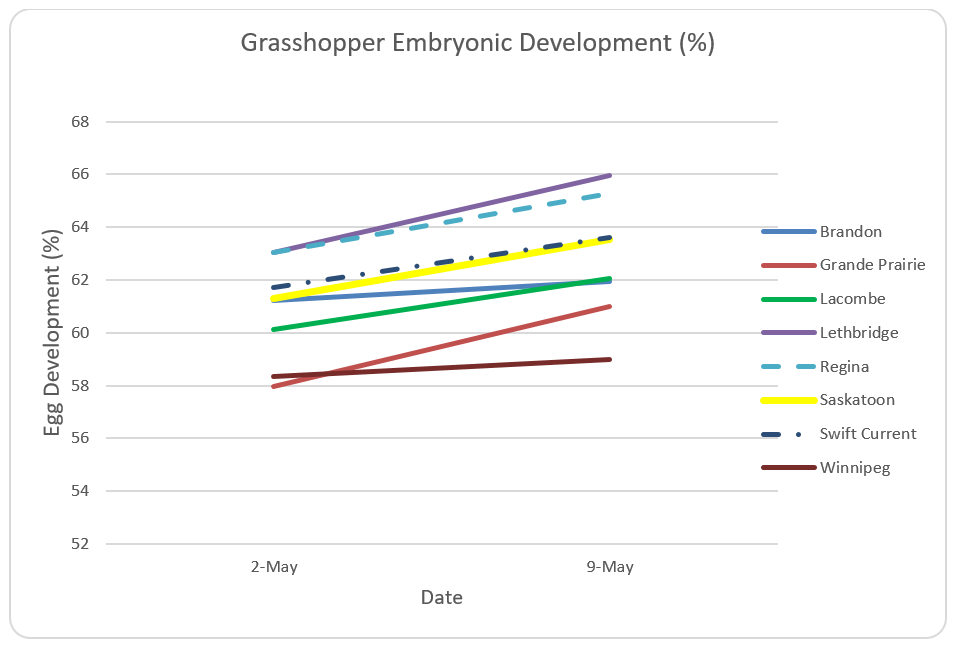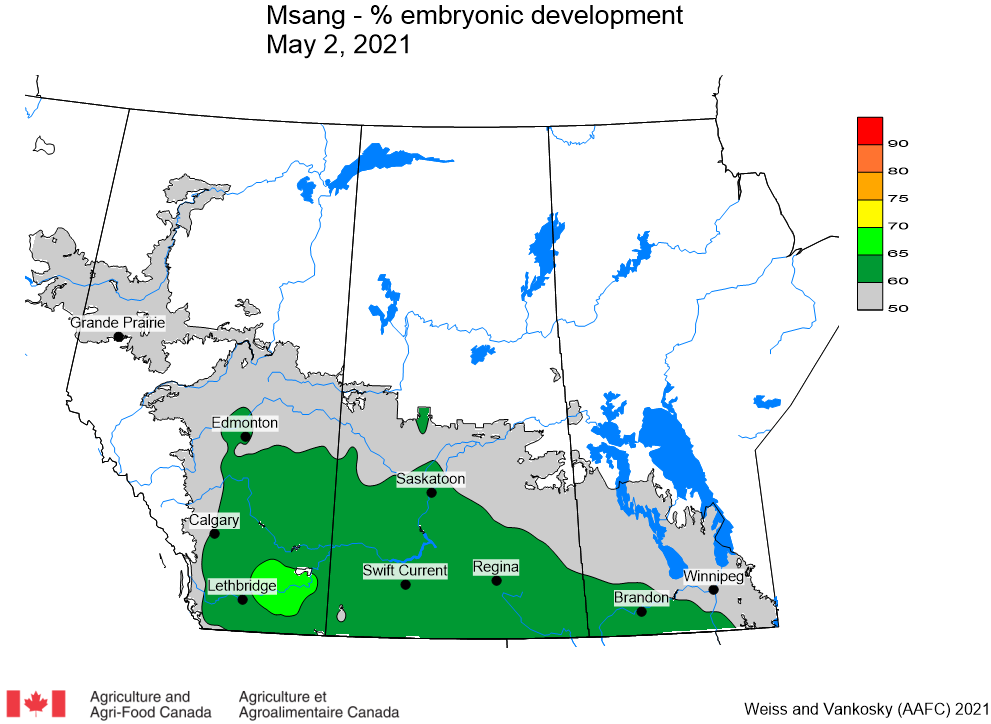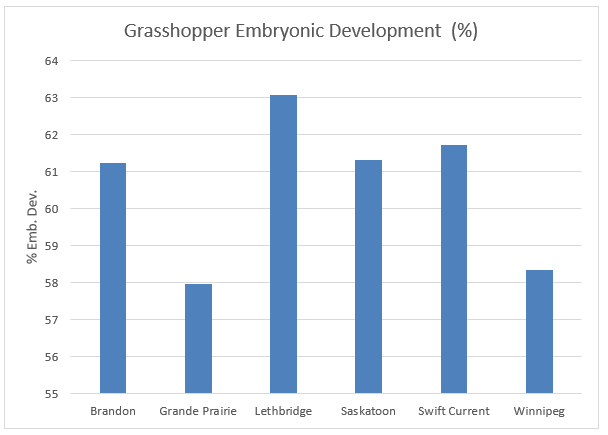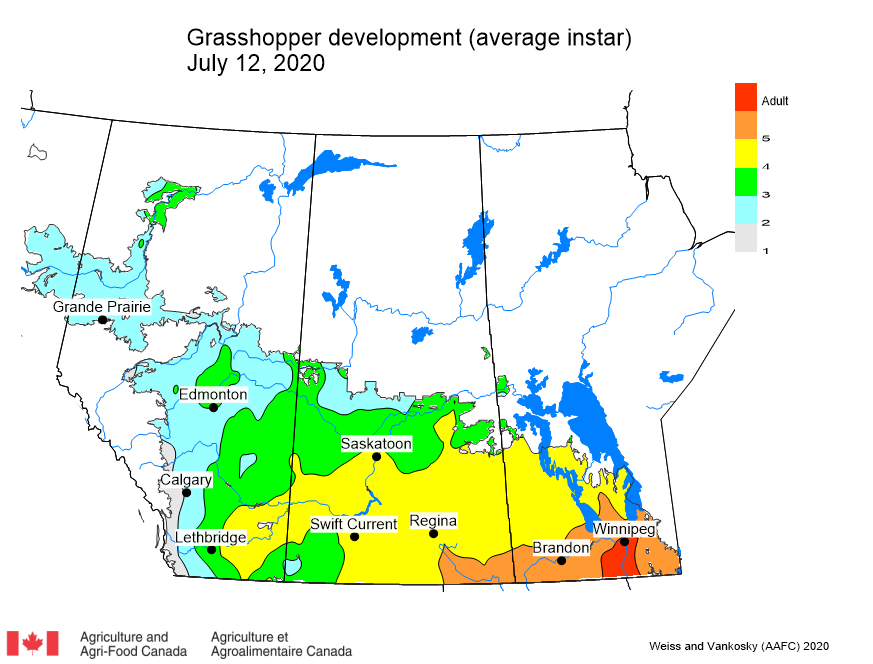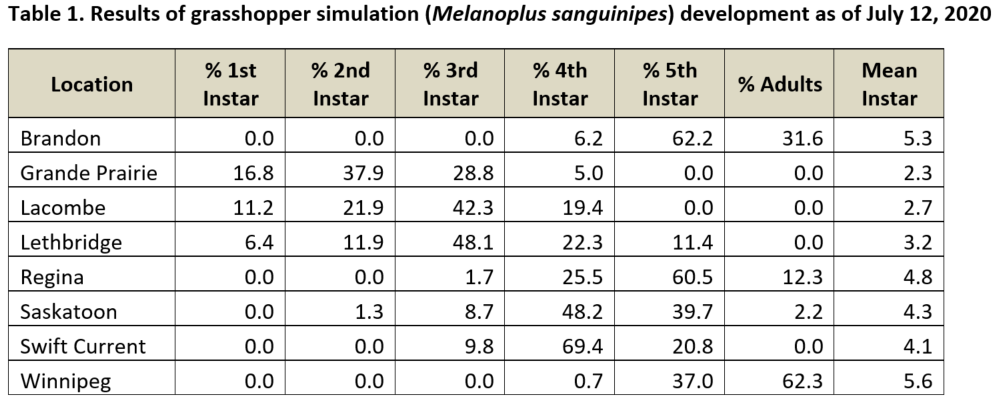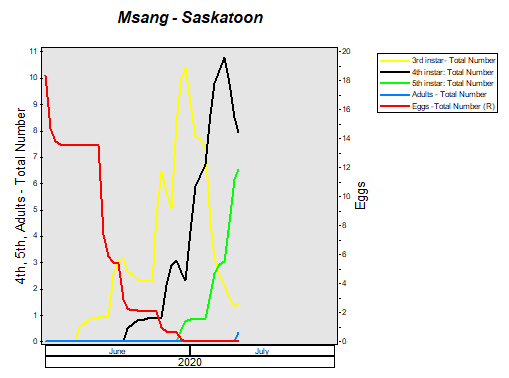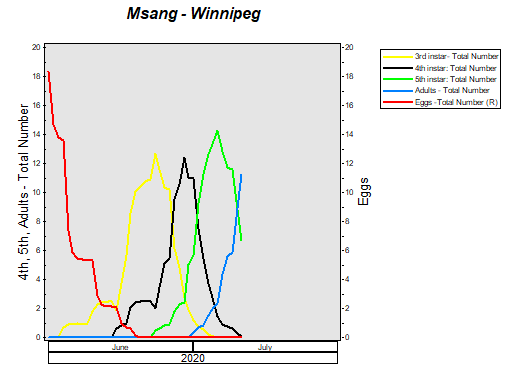The grasshopper model was developed for the migratory grasshopper, but closely represents the development of the other primary pest grasshopper species found in the prairie region. The model uses weather from the current growing season to estimate the current status of grasshopper populations, but keep in mind that grasshoppers might not be present in all parts of the prairie region. Field scouting is imperative; the model estimates can be used to help time scouting activities.
The phenology model for grasshopper development on the prairies was developed by Olfert et al. (2021) and is described in: Olfert, O., R.M. Weiss, D. Giffen, M.A. Vankosky. 2021. Modelling ecological dynamics of a major agricultural pest insect (Melanoplus sanguinipes; Orthoptera: Acrididae): a cohort-based approach incorporating the effects of weather on grasshopper development and abundance. Journal of Economic Entomology 114: 122-130. DOI: 10.1093/jee/toaa254
Model simulations were used to estimate development of grasshoppers as of June 29, 2025. The model outputs predict that grasshopper populations, where present, consist mainly of 3rd and 4th instar individuals (Fig. 1). These findings correspond with field observations from June 25th between Saskatoon and Rosetown, Saskatchewan. Based on the model readings, grasshopper populations surrounding Winnipeg should have higher numbers of 5th instar individuals (Fig. 2).
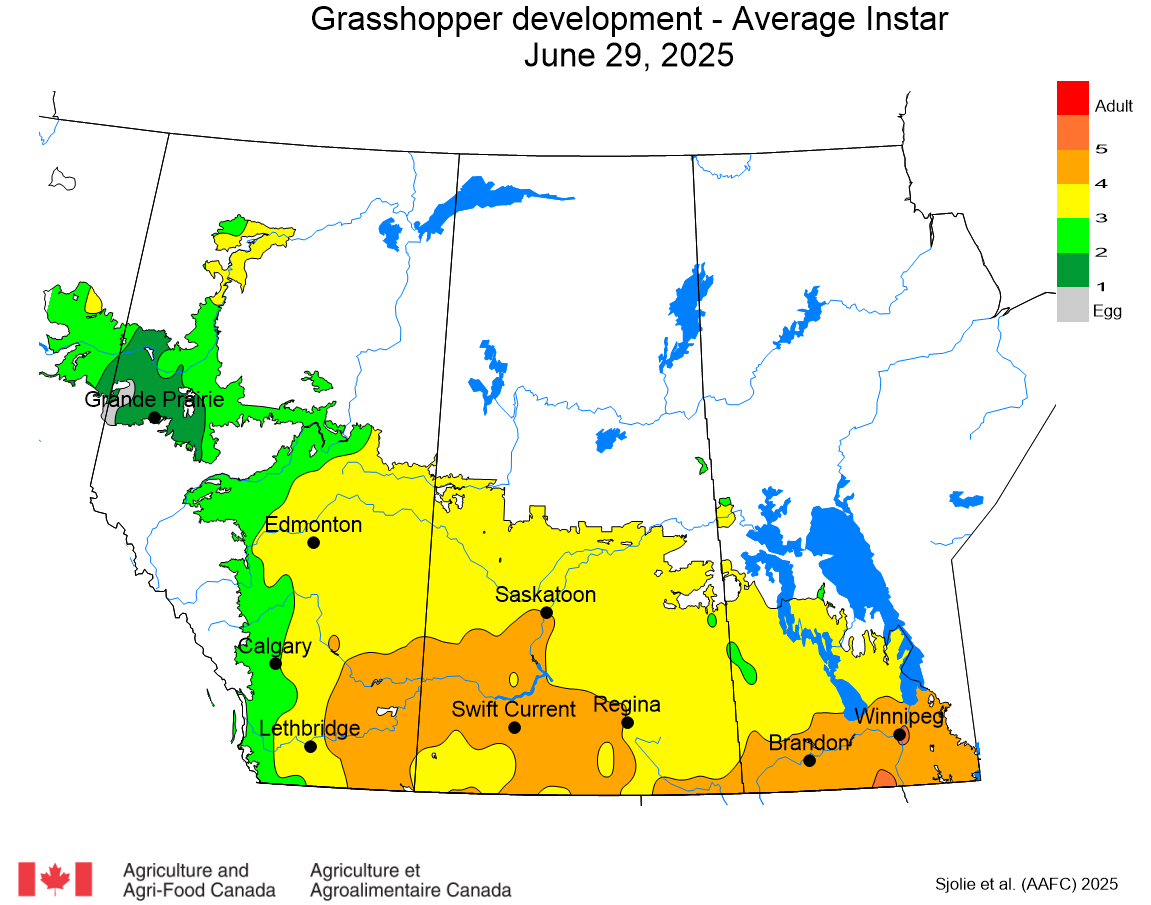
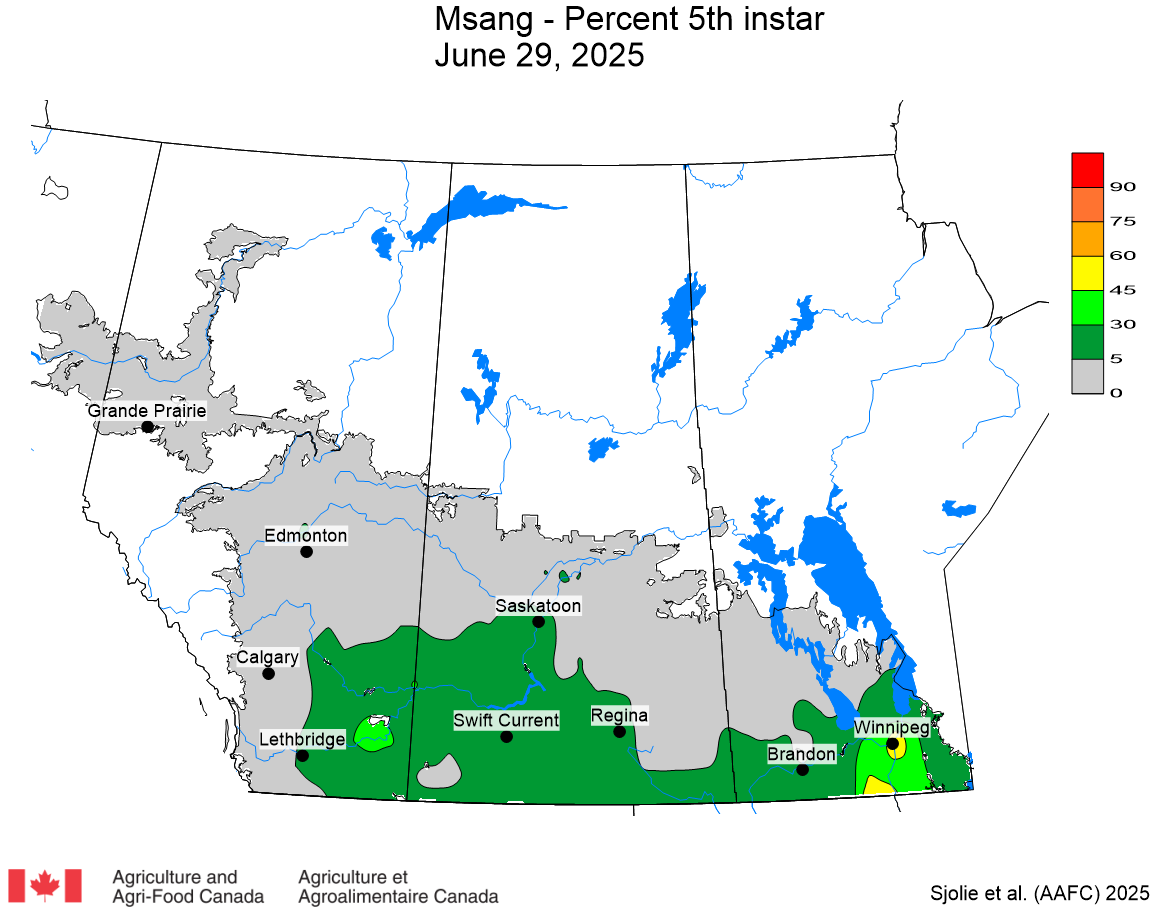
Grasshopper Scouting Tips:
● Review grasshopper diversity and photos of nymphs, adults, and non-grasshopper species (Gavloski, Williams, Underwood, Johnson, Otani) to aid with field scouting from egg hatch and onwards. The PDF includes photos to help differentiate native versus pest grasshopper species plus froghopper, treehopper or even katydid species.
● It is best to scout on warm days when grasshopper nymphs are more active and easier to observe.
● Carefully check roadside ditches and along field edges but also check the edge of the crop and into the actual field.
● Younger or earlier instar nymphs are easier to manage – visit sites every few days to stay on top of local field conditions.
● A sweep-net can ‘detect’ grasshopper nymphs, however, economic thresholds for grasshoppers are based on the number of grasshoppers per square-metre counts.
● Access the PPMN’s Grasshopper Monitoring Protocol as a guide to help implement in-field monitoring.
● Review grasshopper lifecycle, damage and scouting and economic thresholds to support sound management decisions enabling the preservation of beneficial arthropods and mitigation of economic losses.
Important – A preliminary summary of available thresholds for grasshoppers has been kindly shared by Dr. J. Tansey (Saskatchewan Agriculture) in Table 1. When scouting, compare in-field counts to the available threshold value for the appropriate host crop AND for field or ditch situations. Available thresholds (nominal and economic) help support producers while protecting beneficials (i.e., predators, parasitoids, and pathogens) that regulate natural populations of grasshoppers.
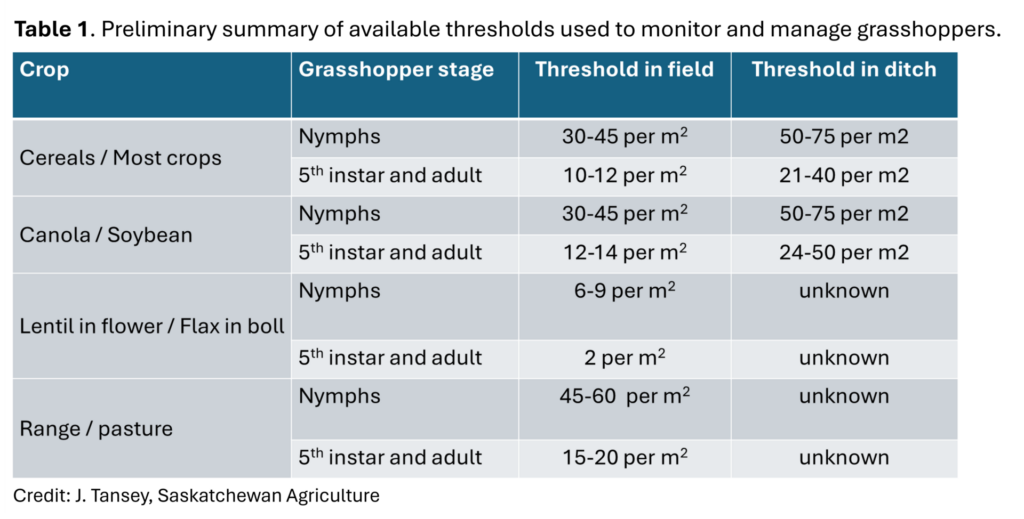
Biological and monitoring information (including tips for scouting and economic thresholds) related to grasshoppers in field crops is posted by Manitoba Agriculture, Saskatchewan Ministry of Agriculture, Alberta Agriculture and Irrigation, the BC Ministry of Agriculture, and the Prairie Pest Monitoring Network. Also, refer to the grasshopper pages within the “Field Crop and Forage Pests and their Natural Enemies in Western Canada: Identification and management field guide” (2018) accessible as a free downloadable PDF in either English or French on our Field Guides page. Review the historical grasshopper maps based on late-summer in-field counts of adults performed across the Canadian prairies.

